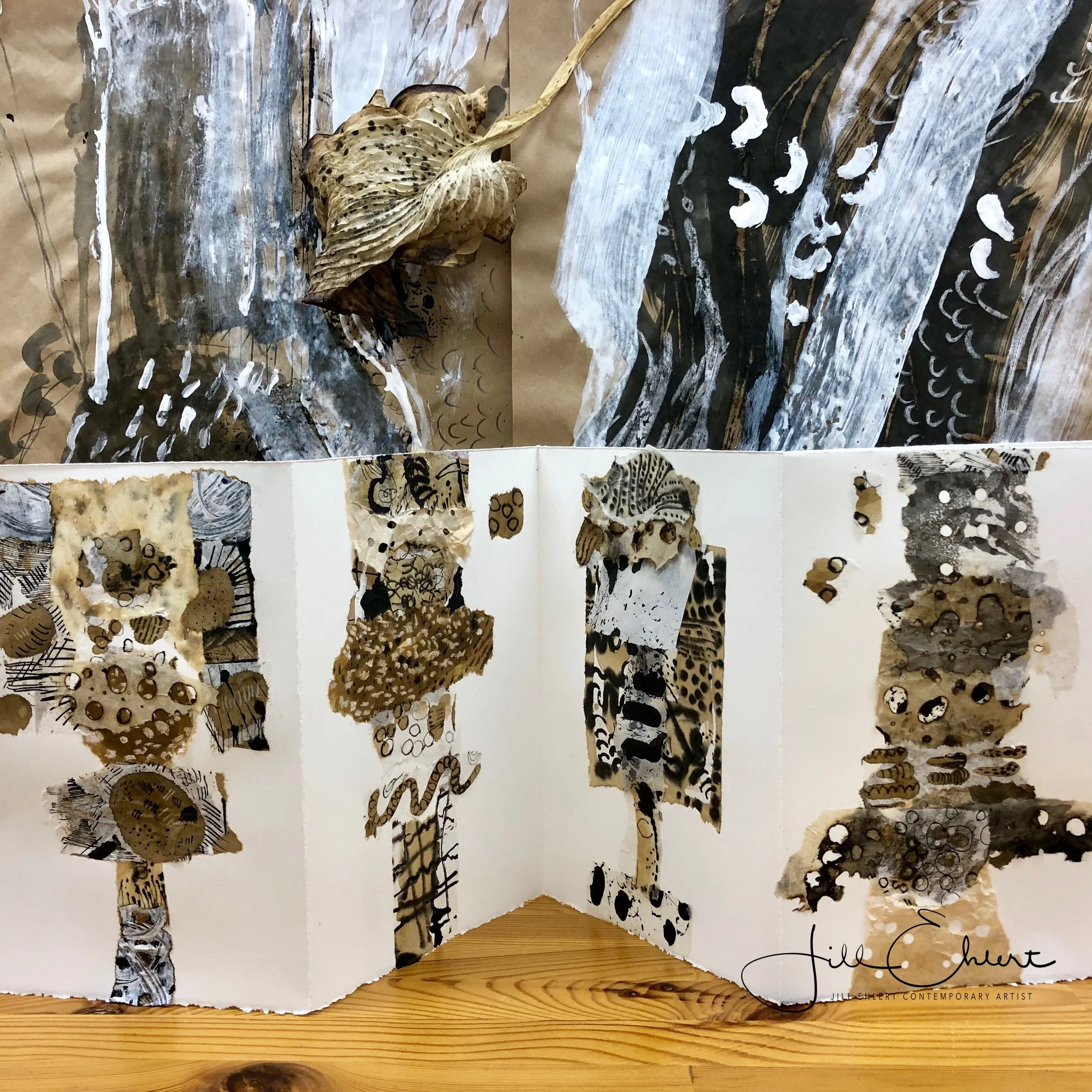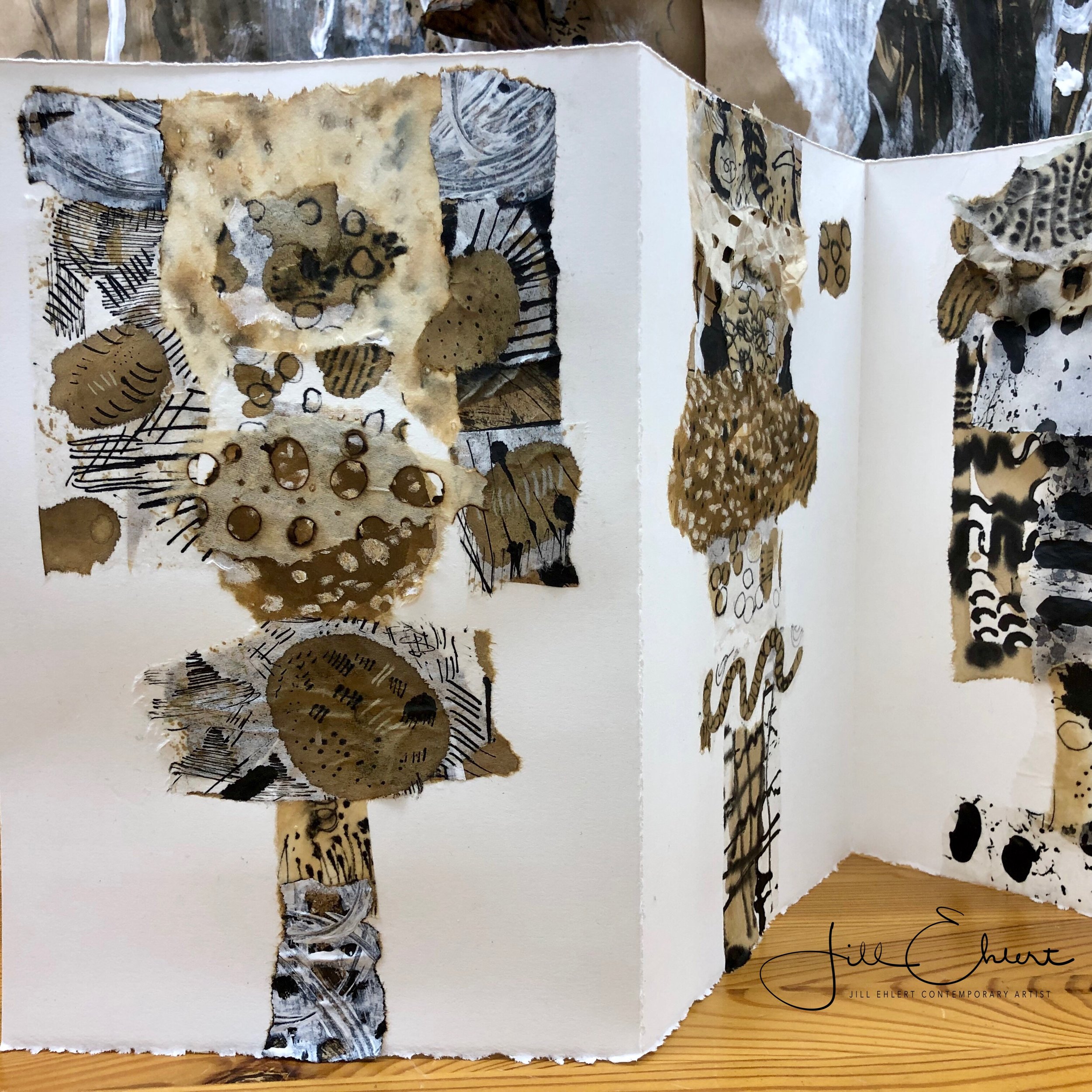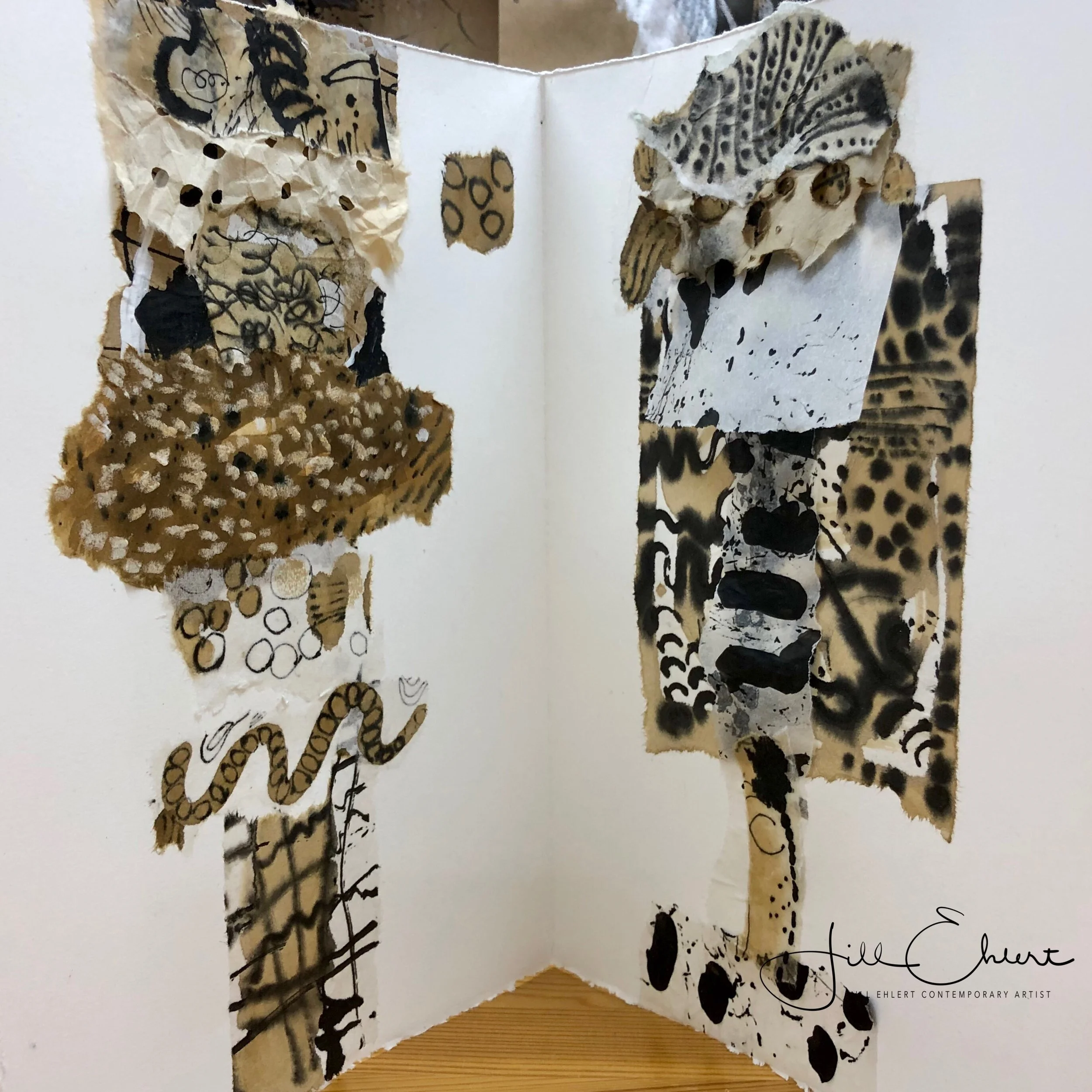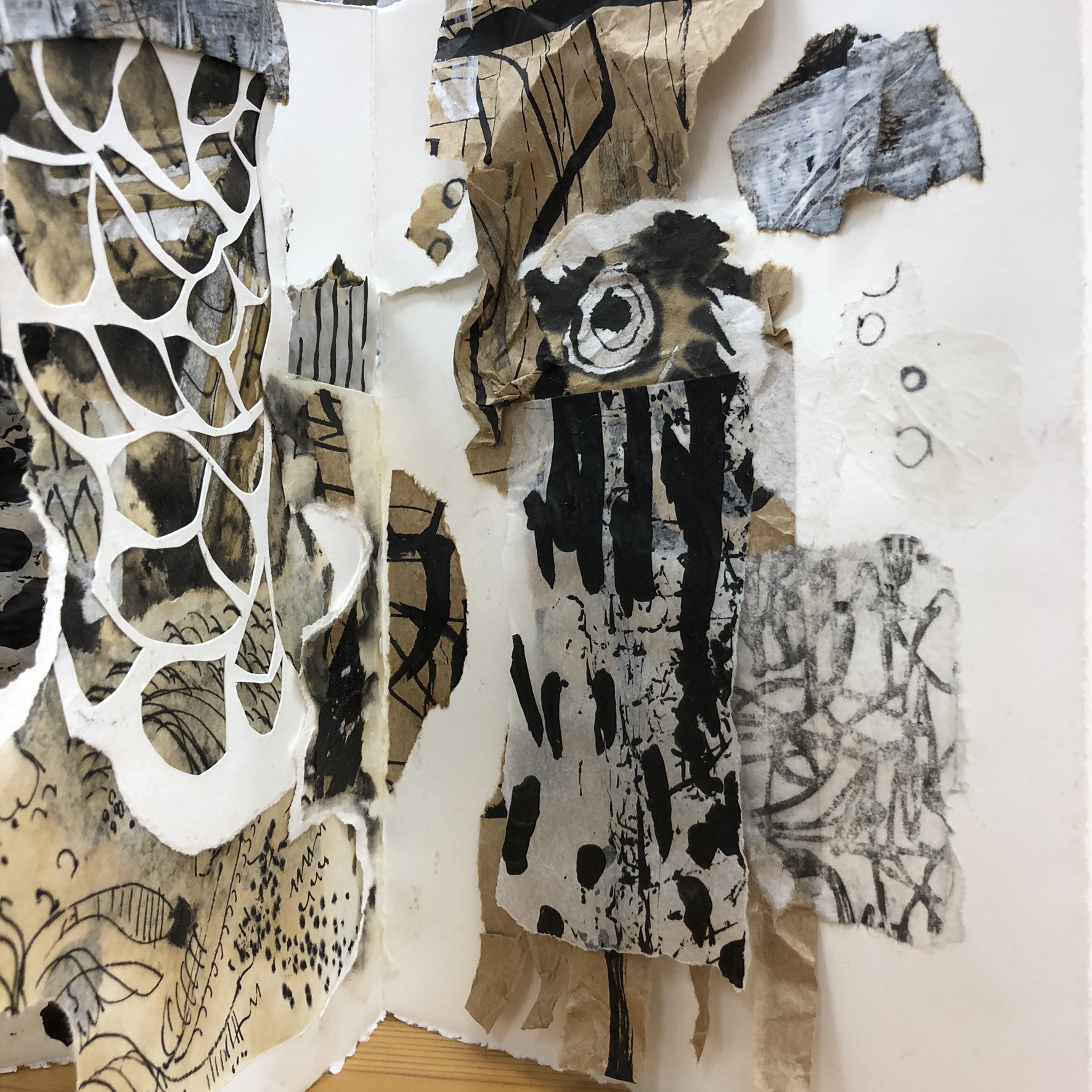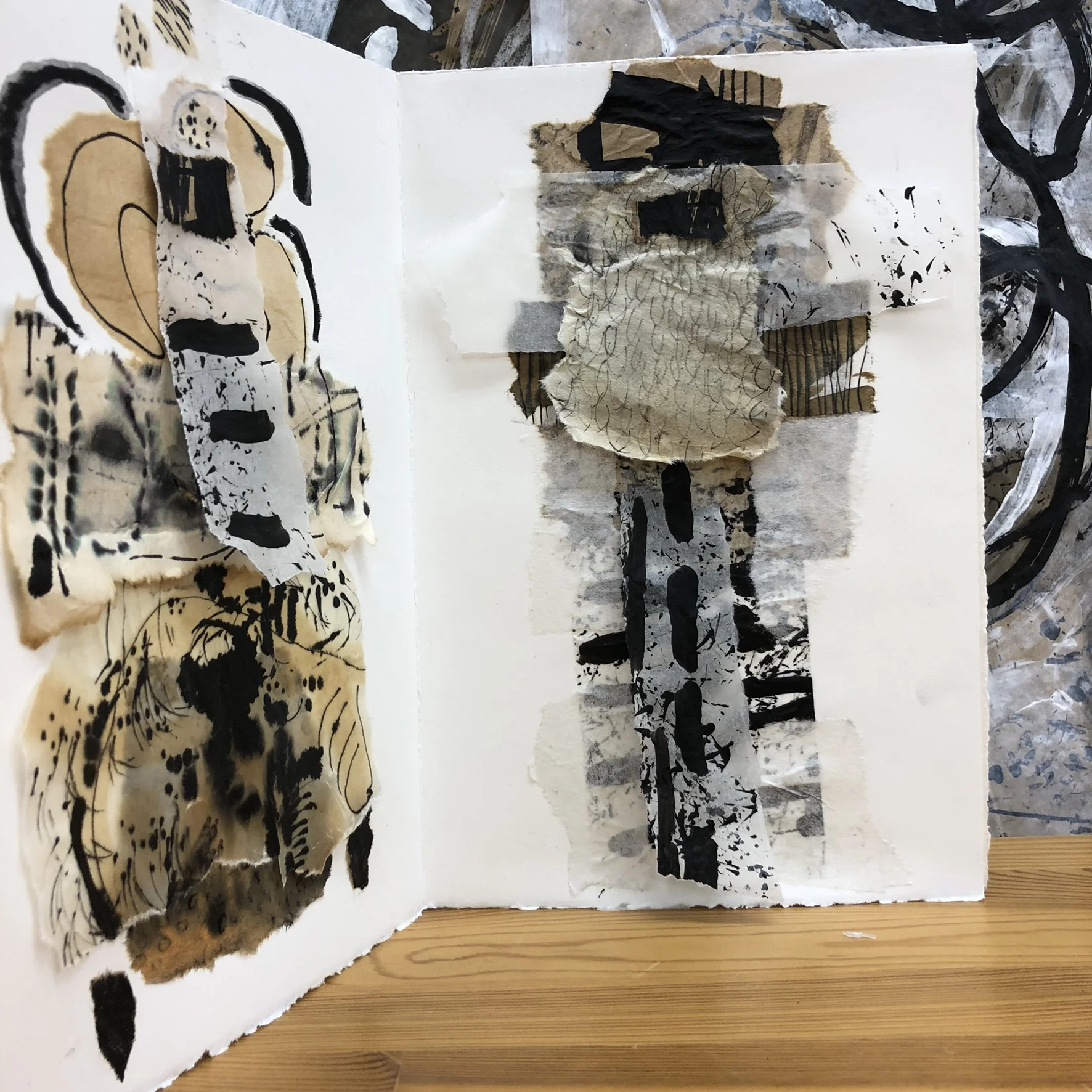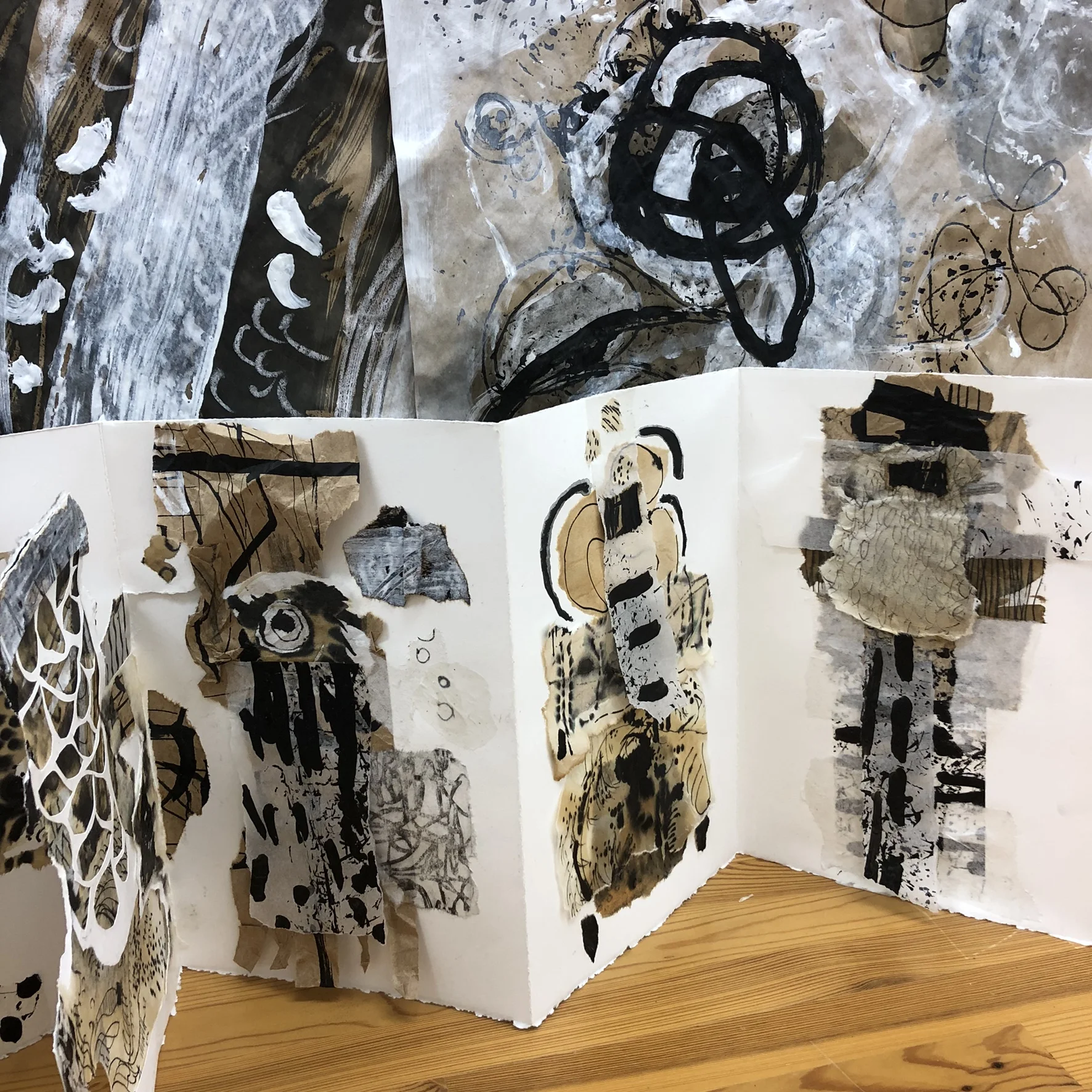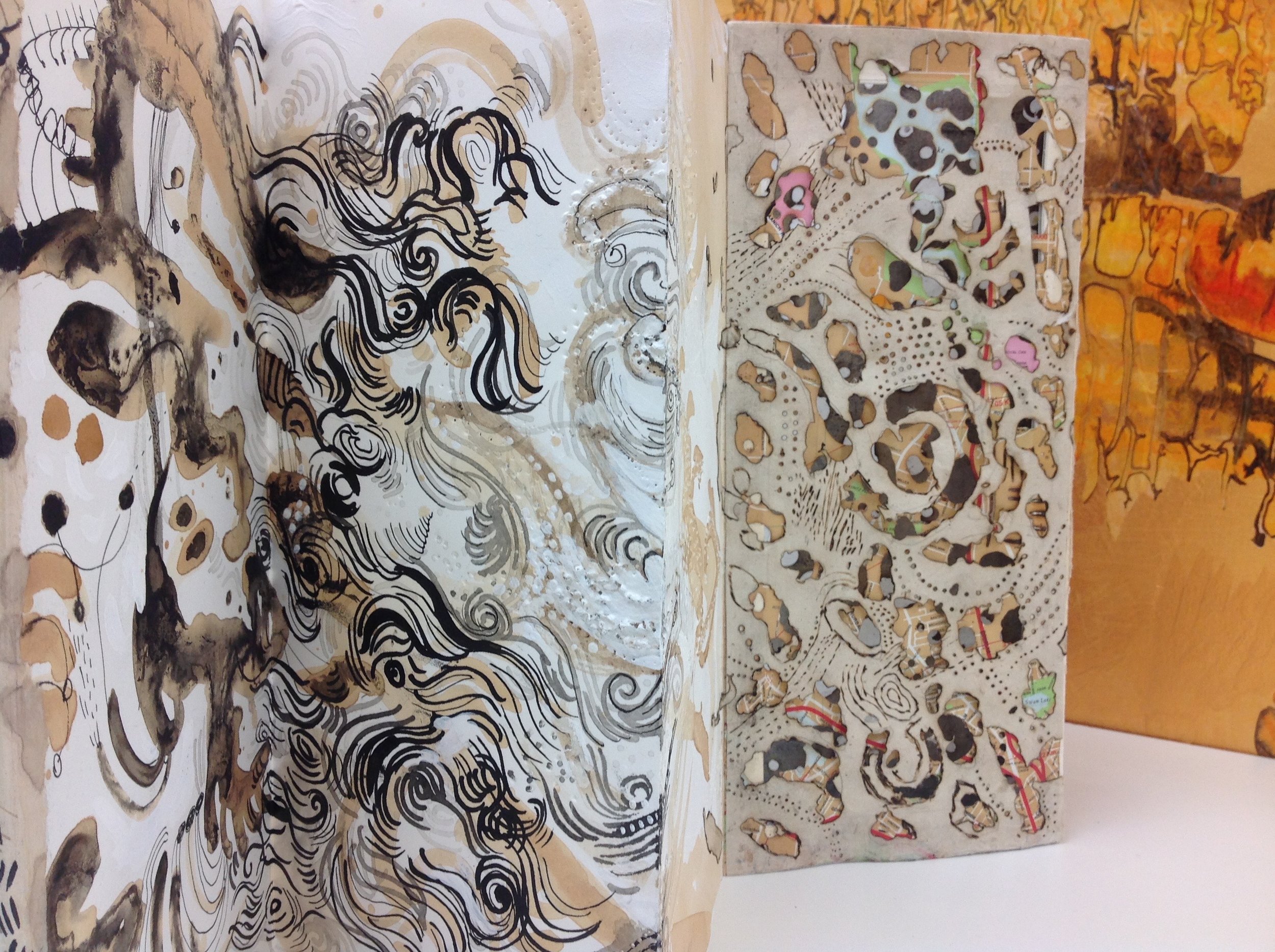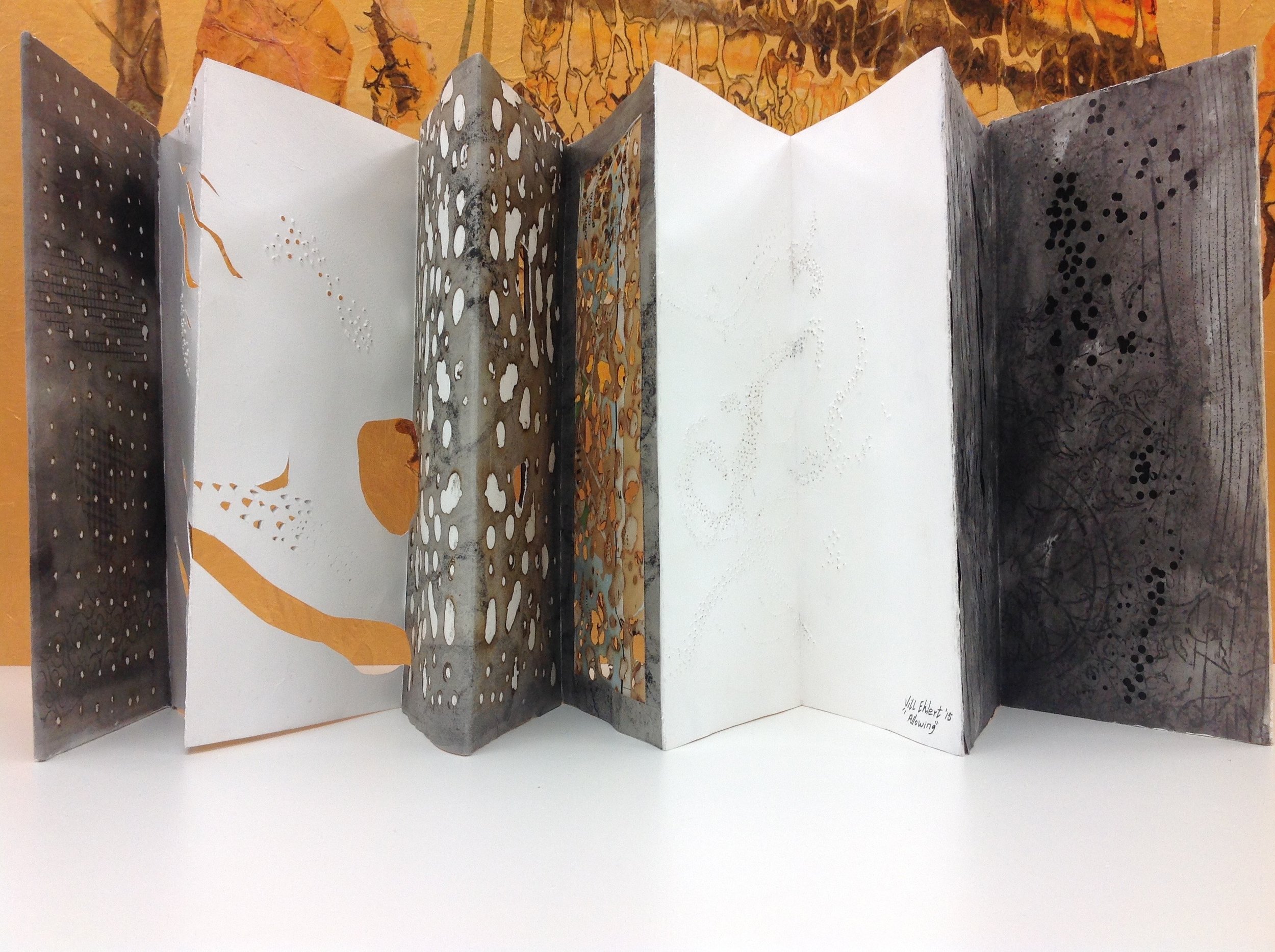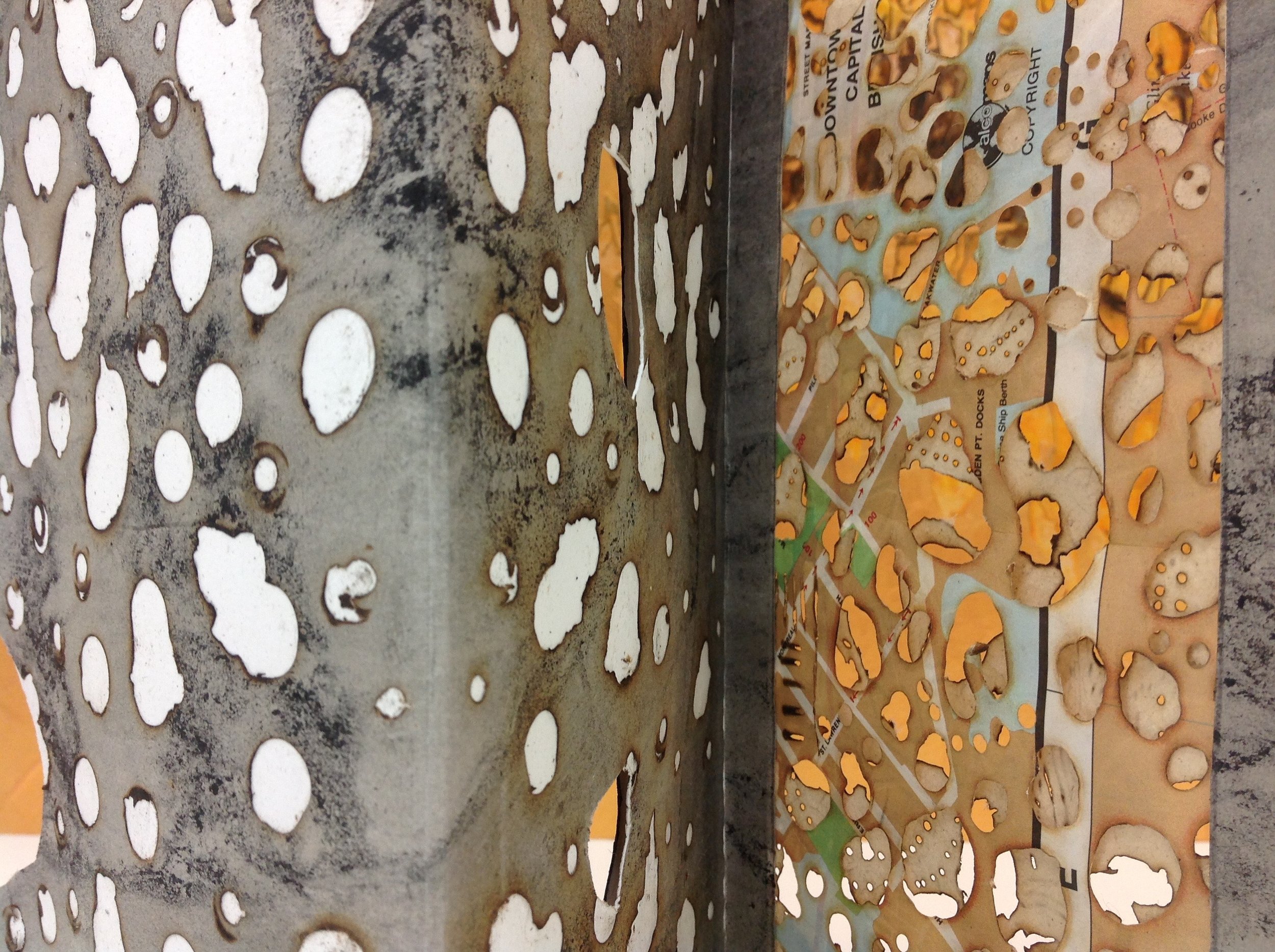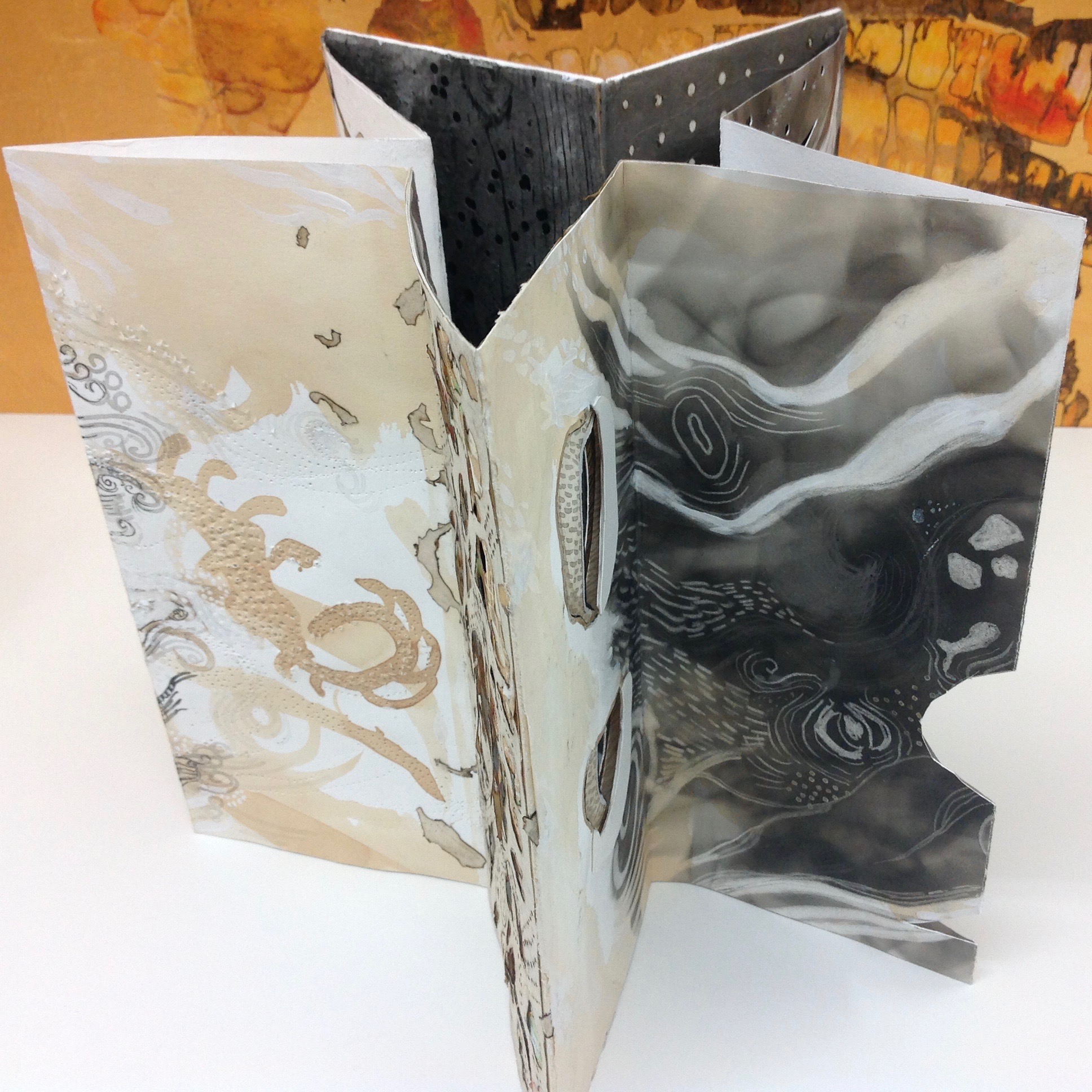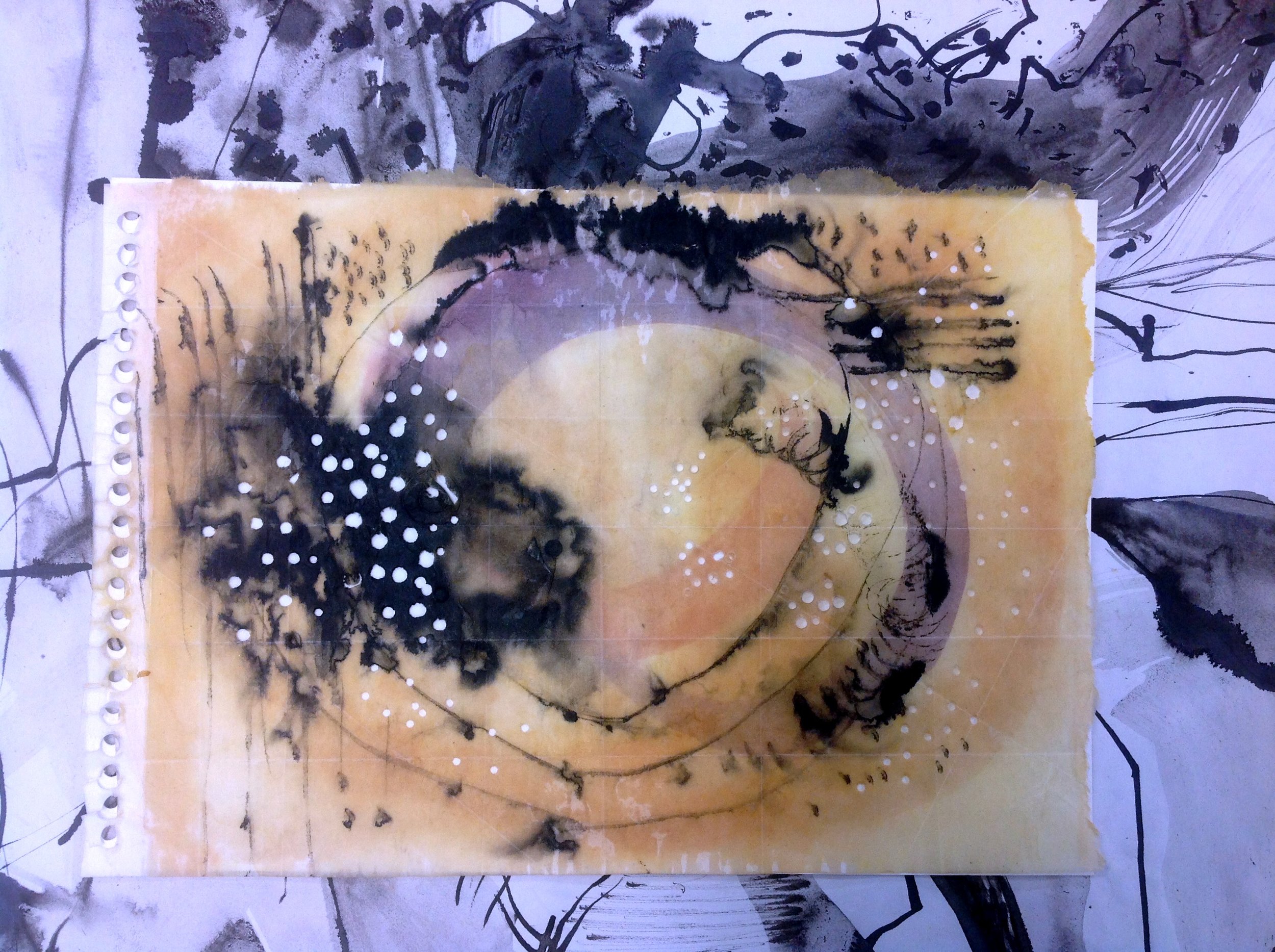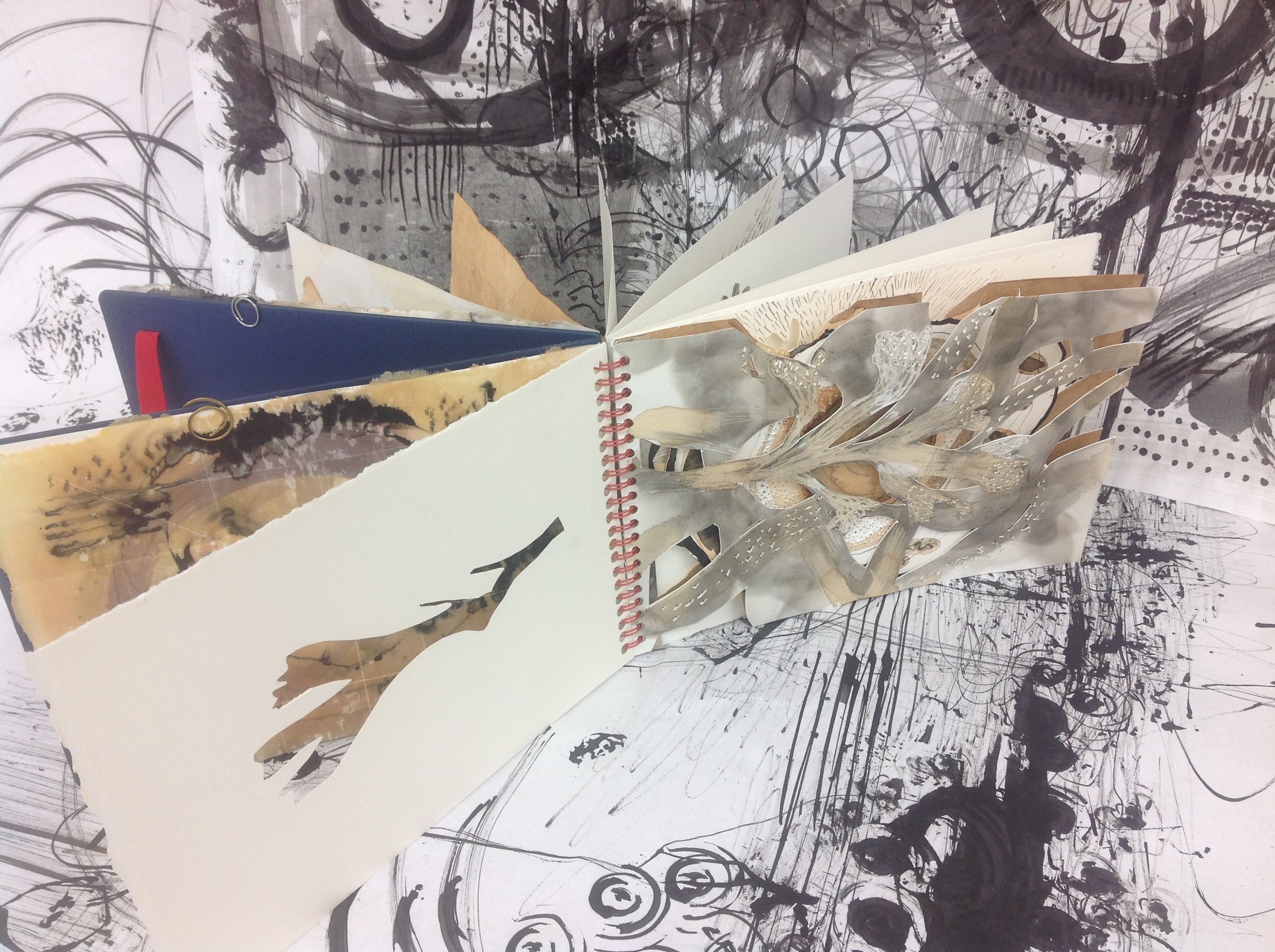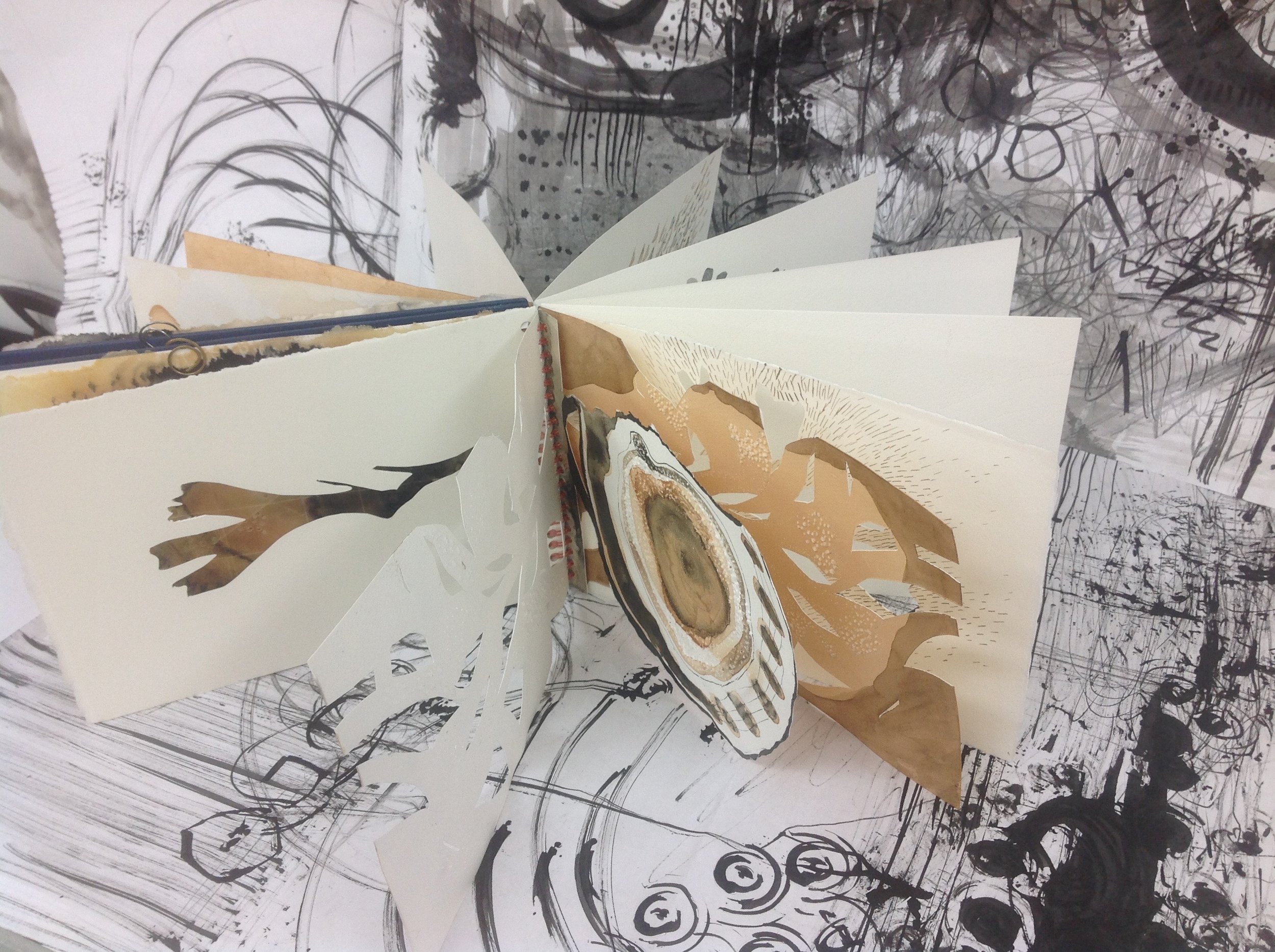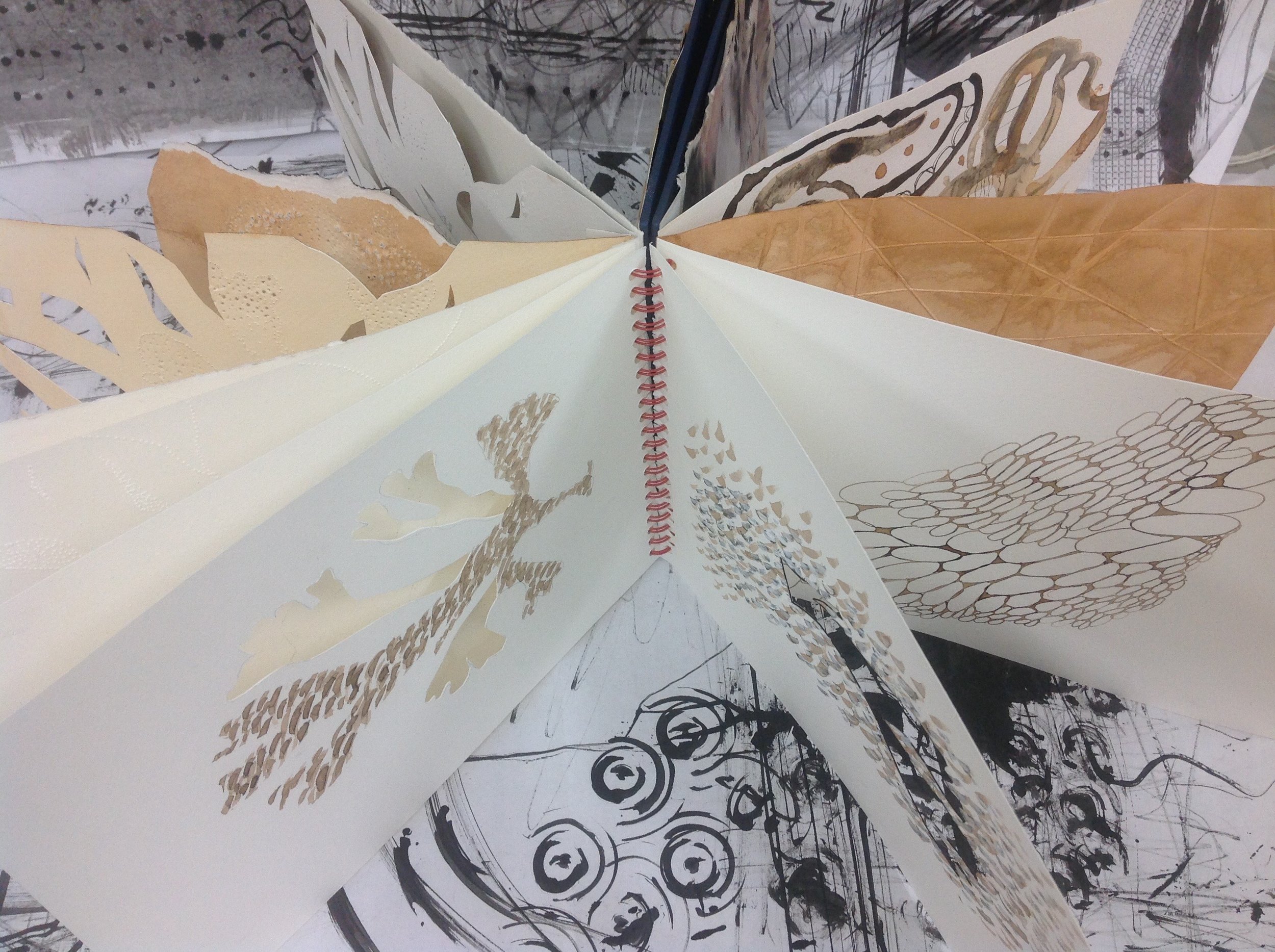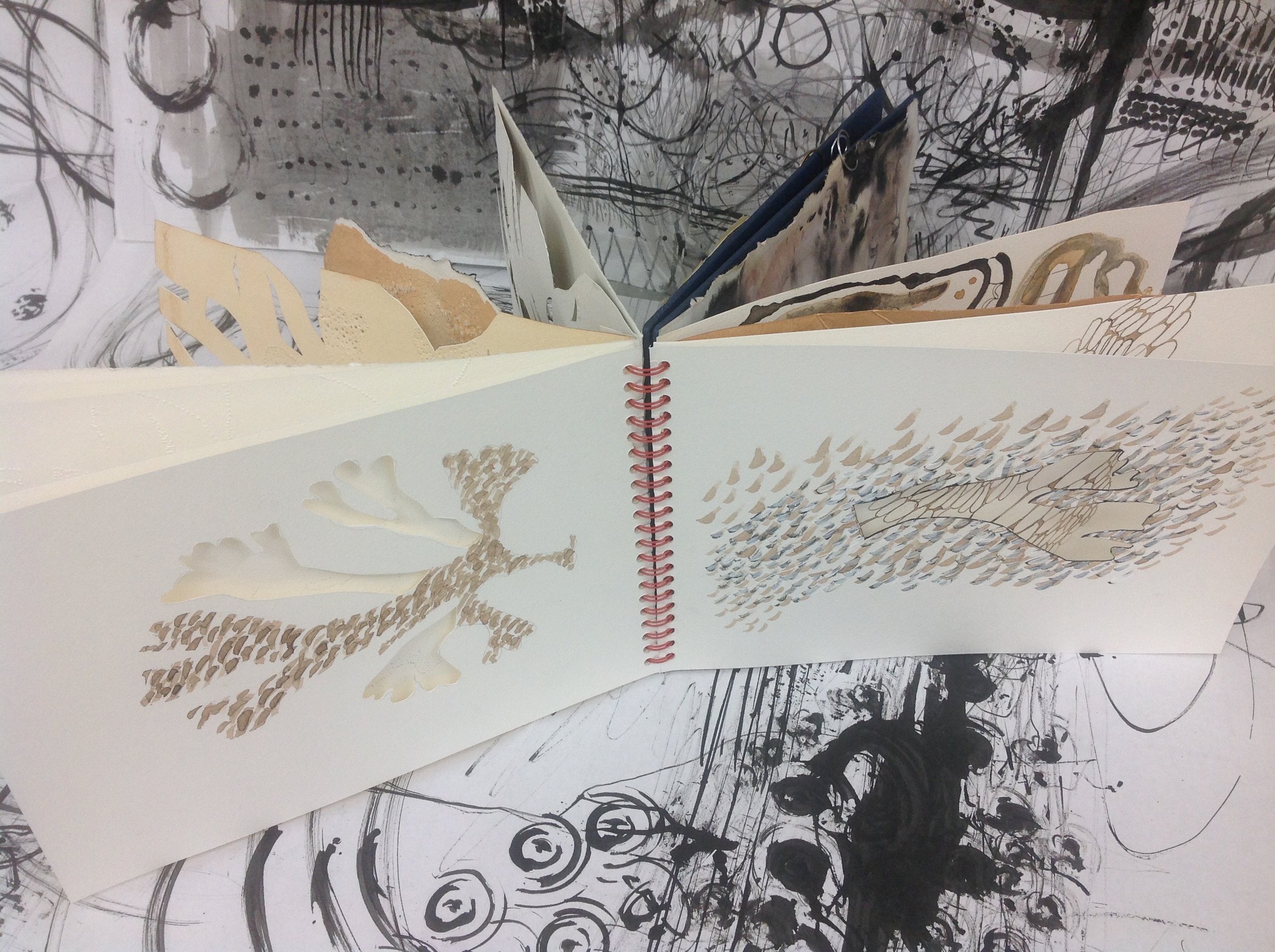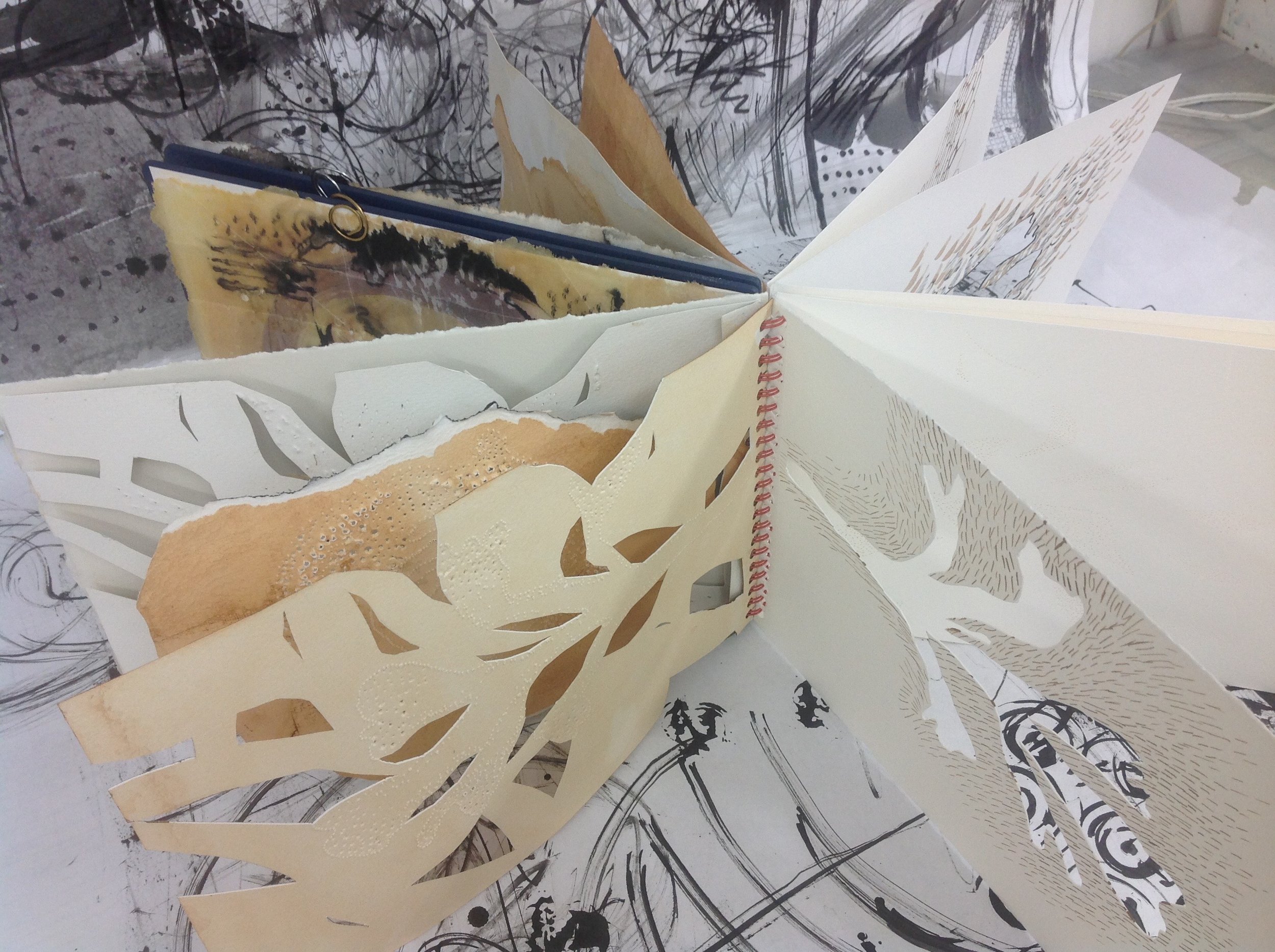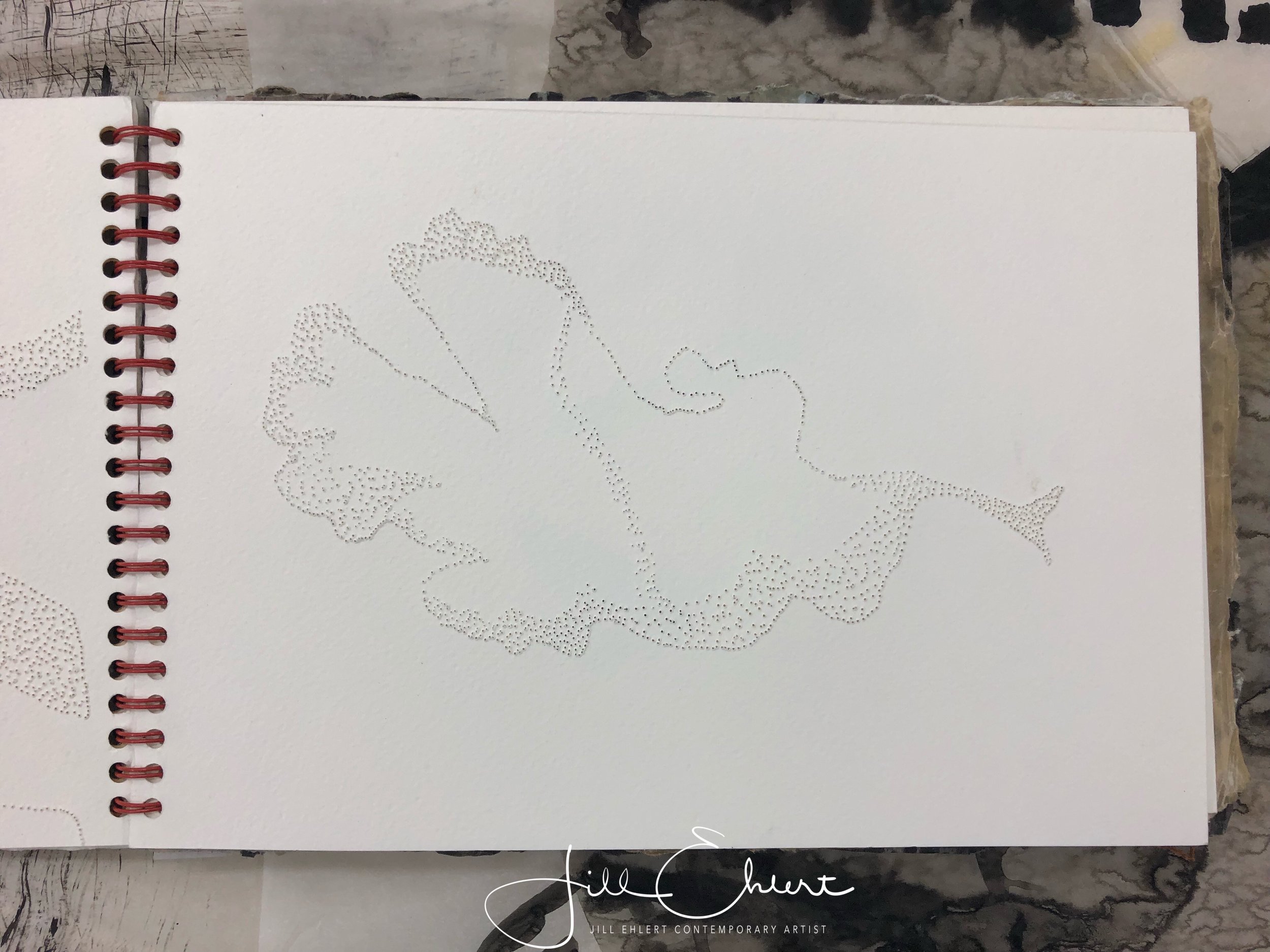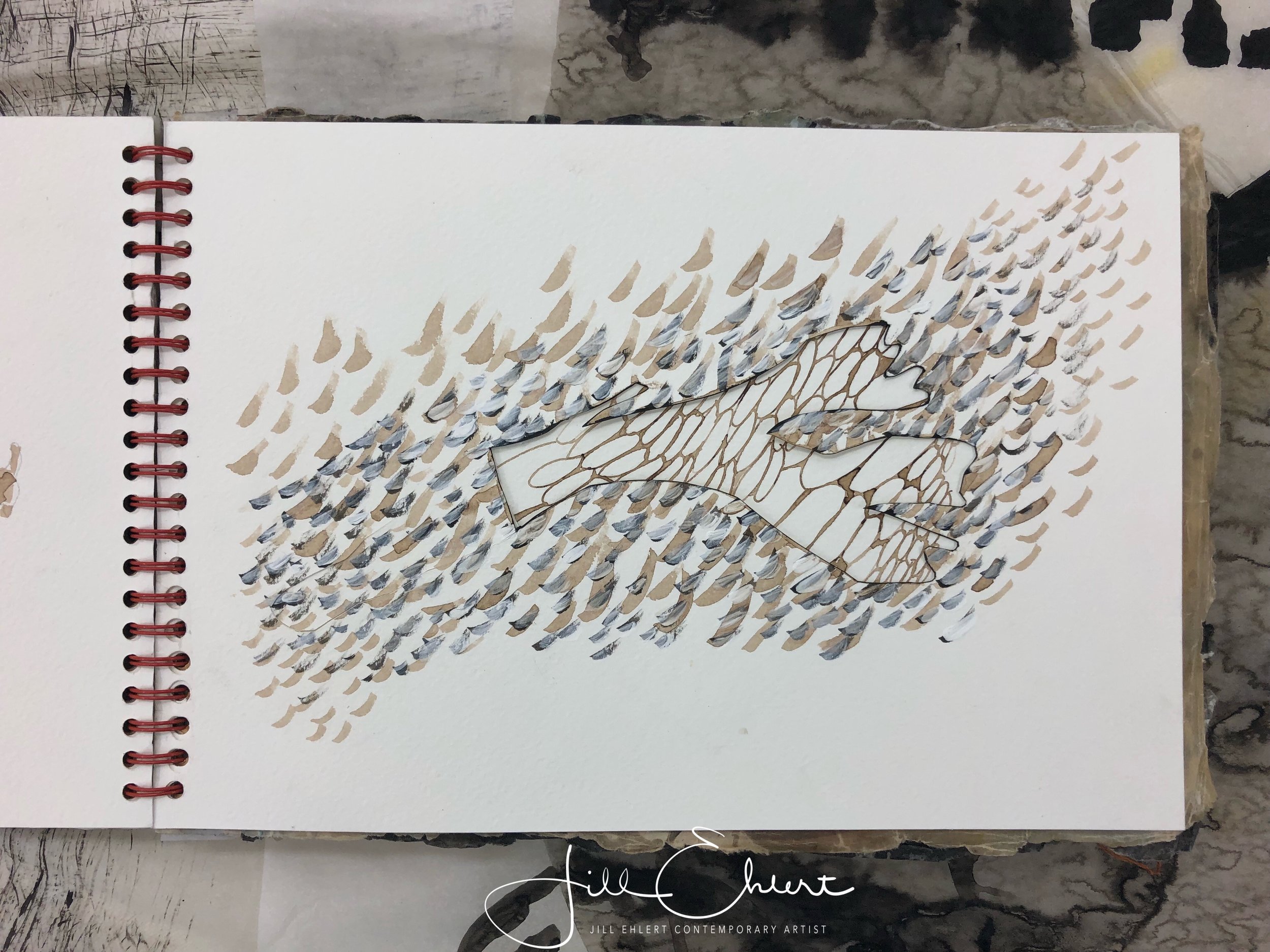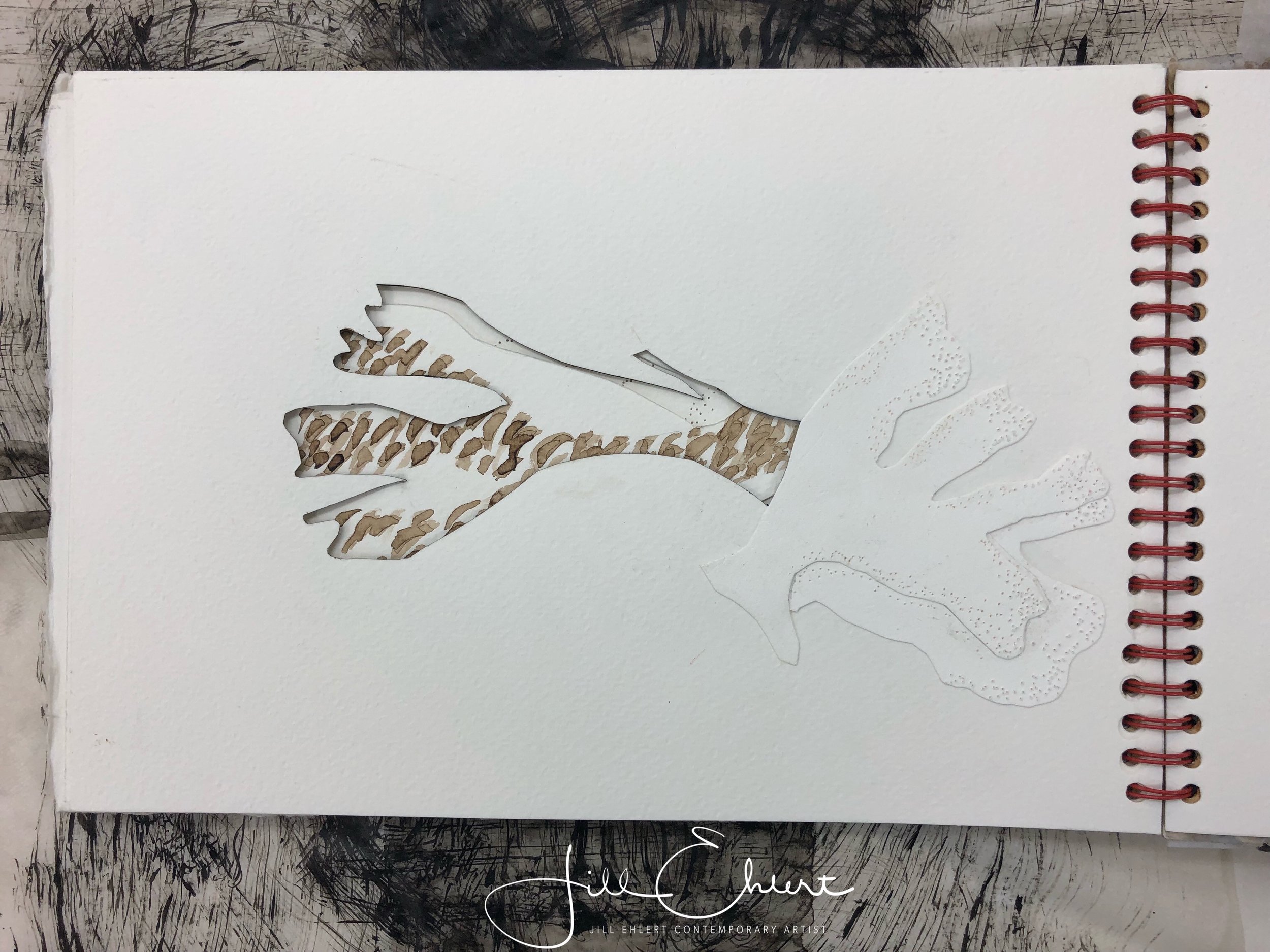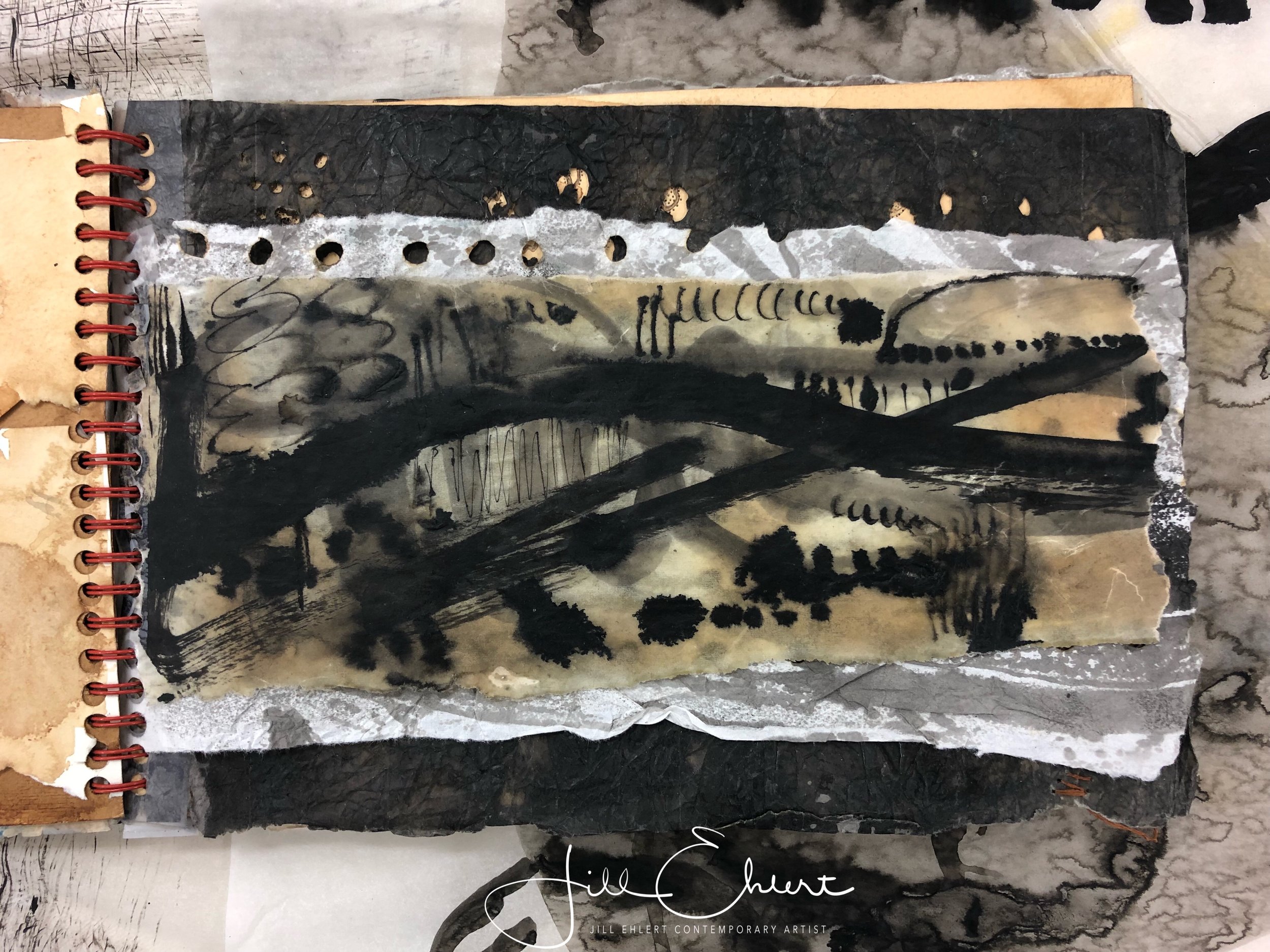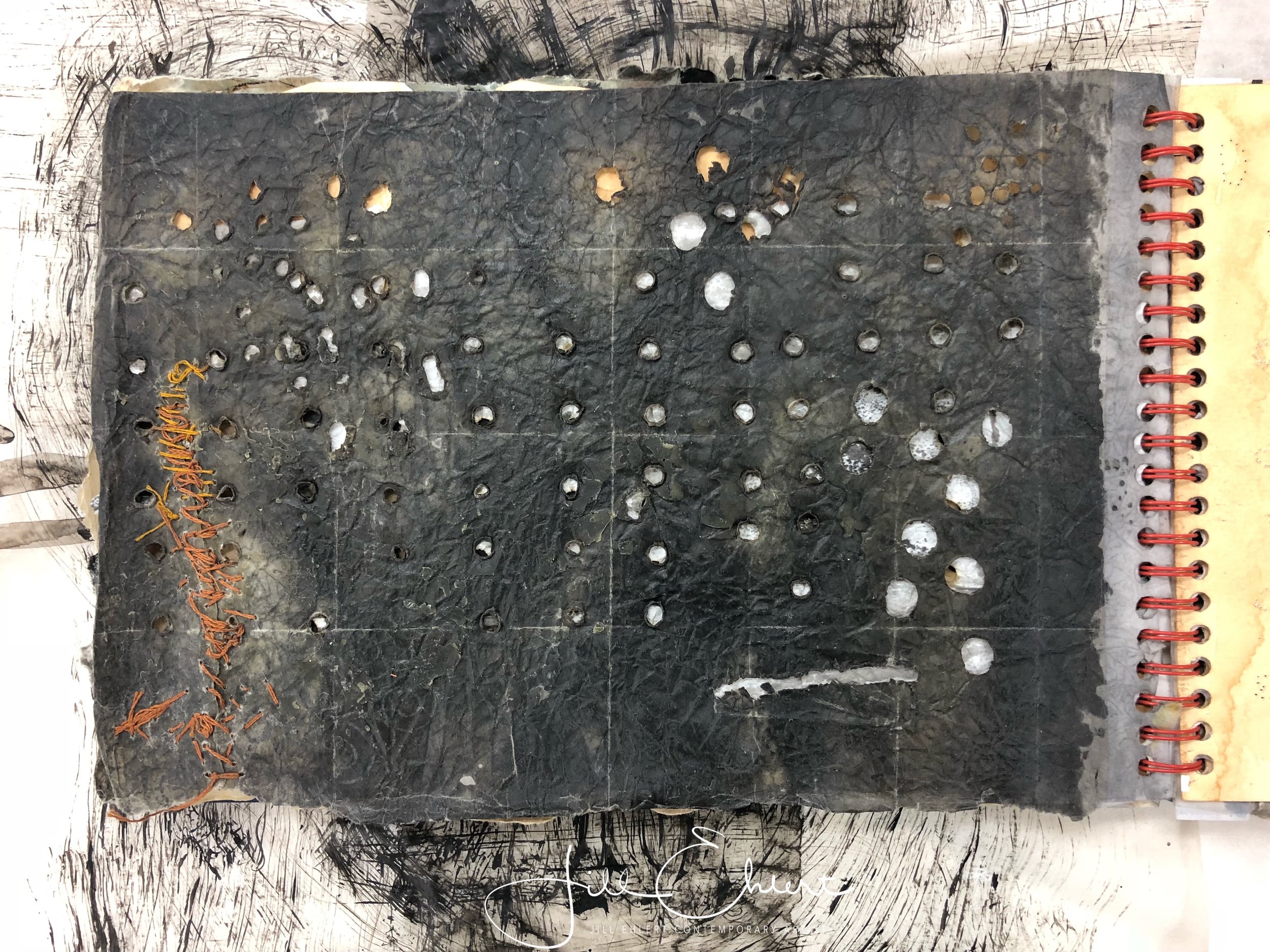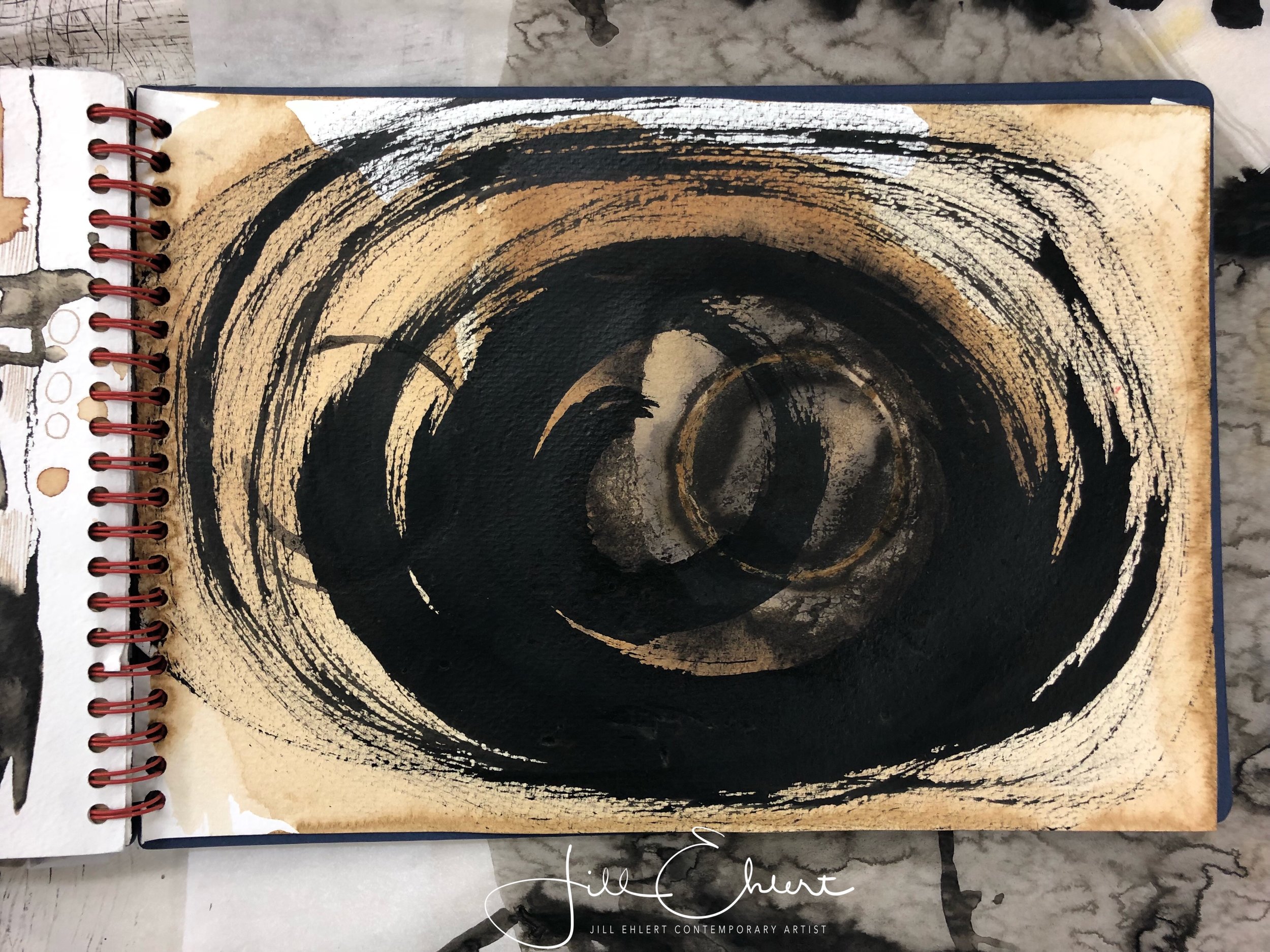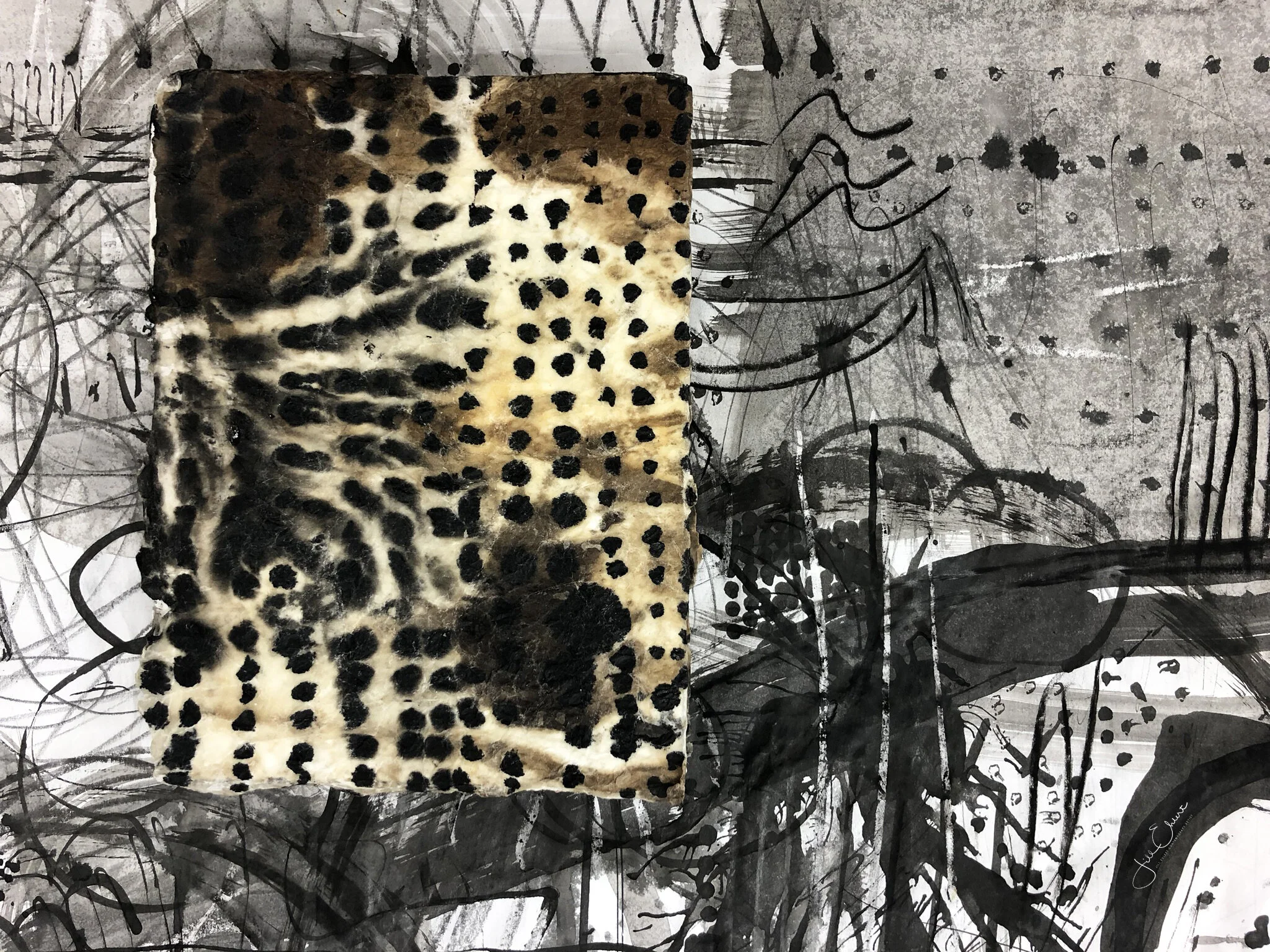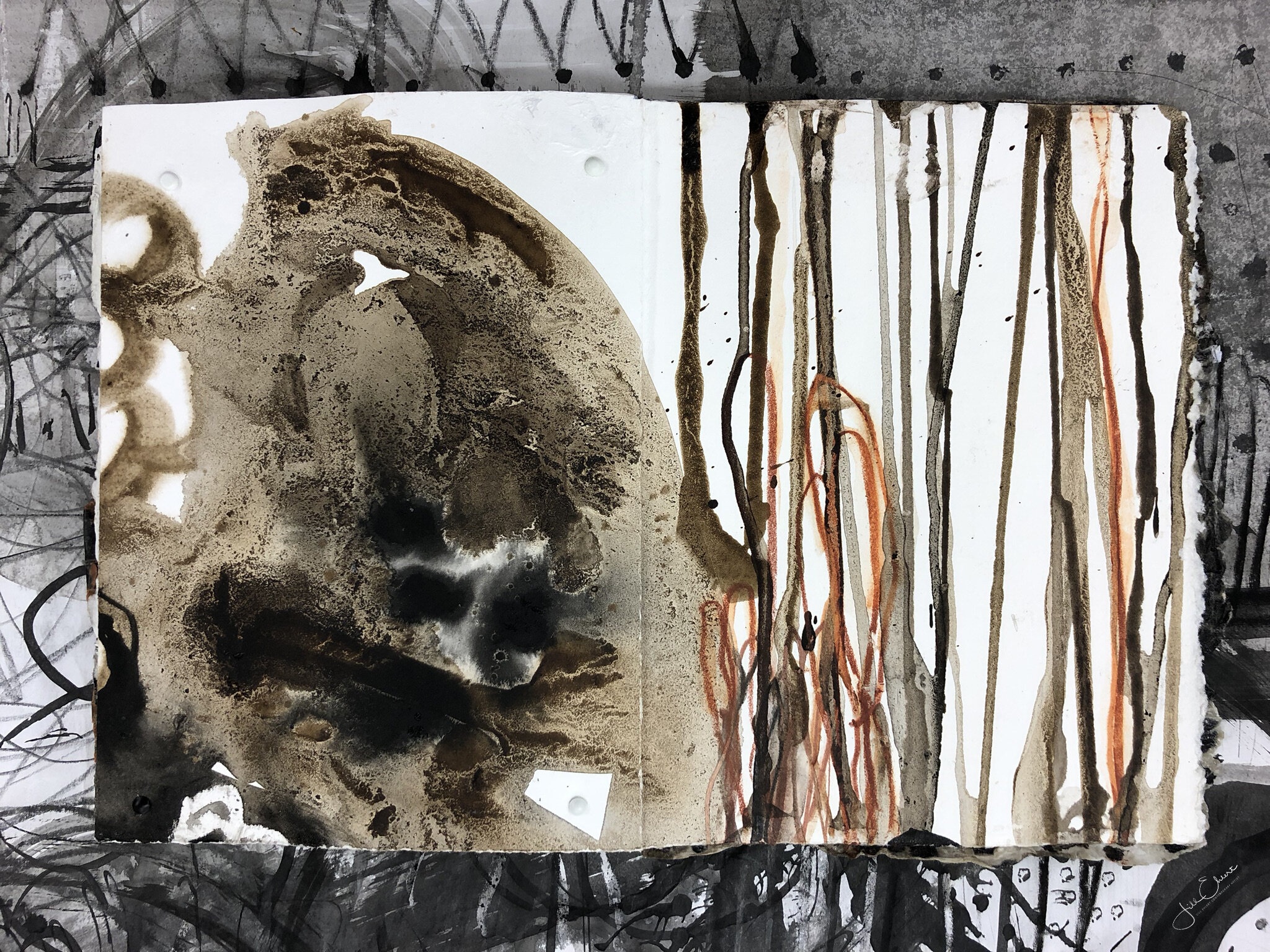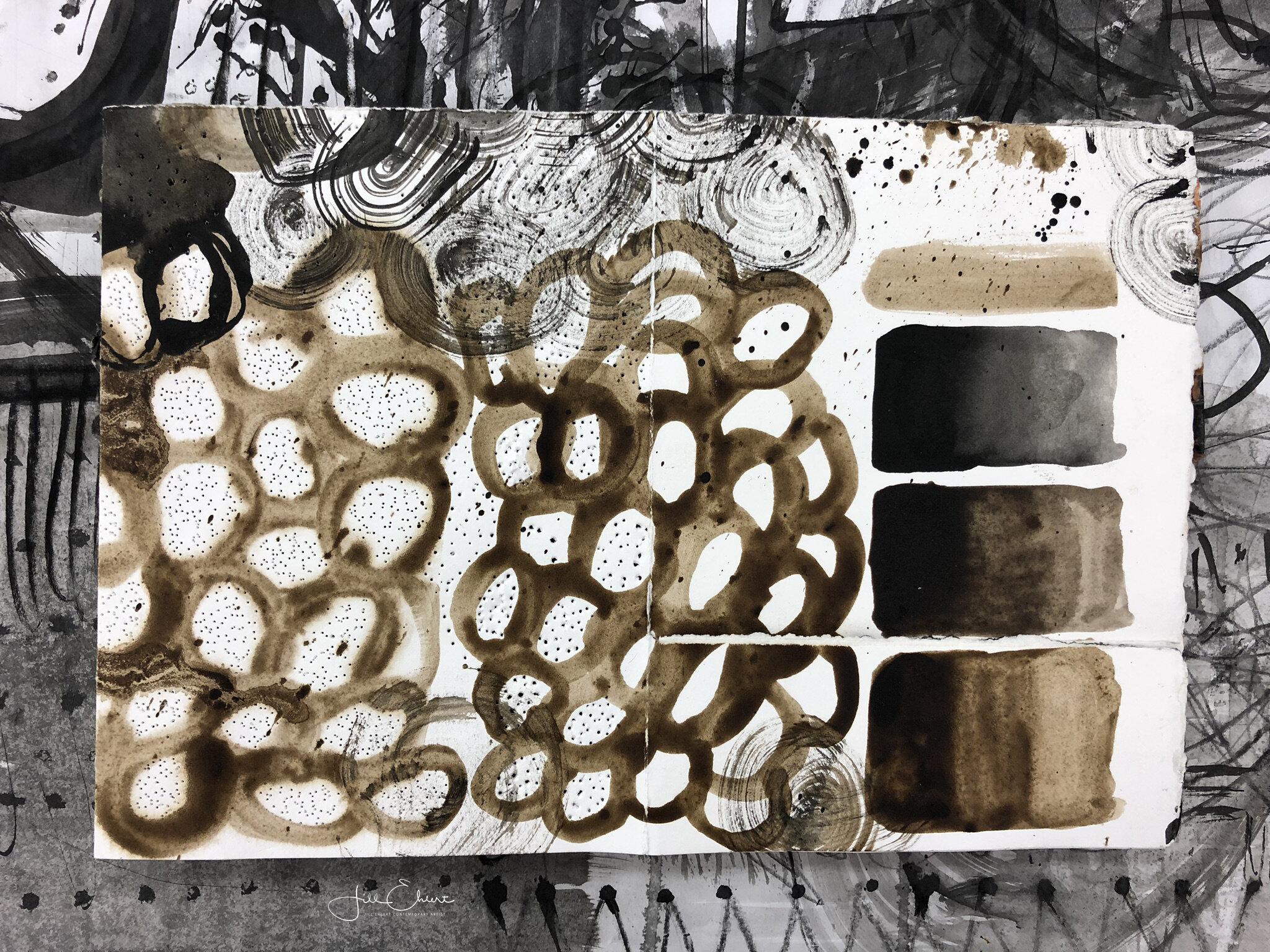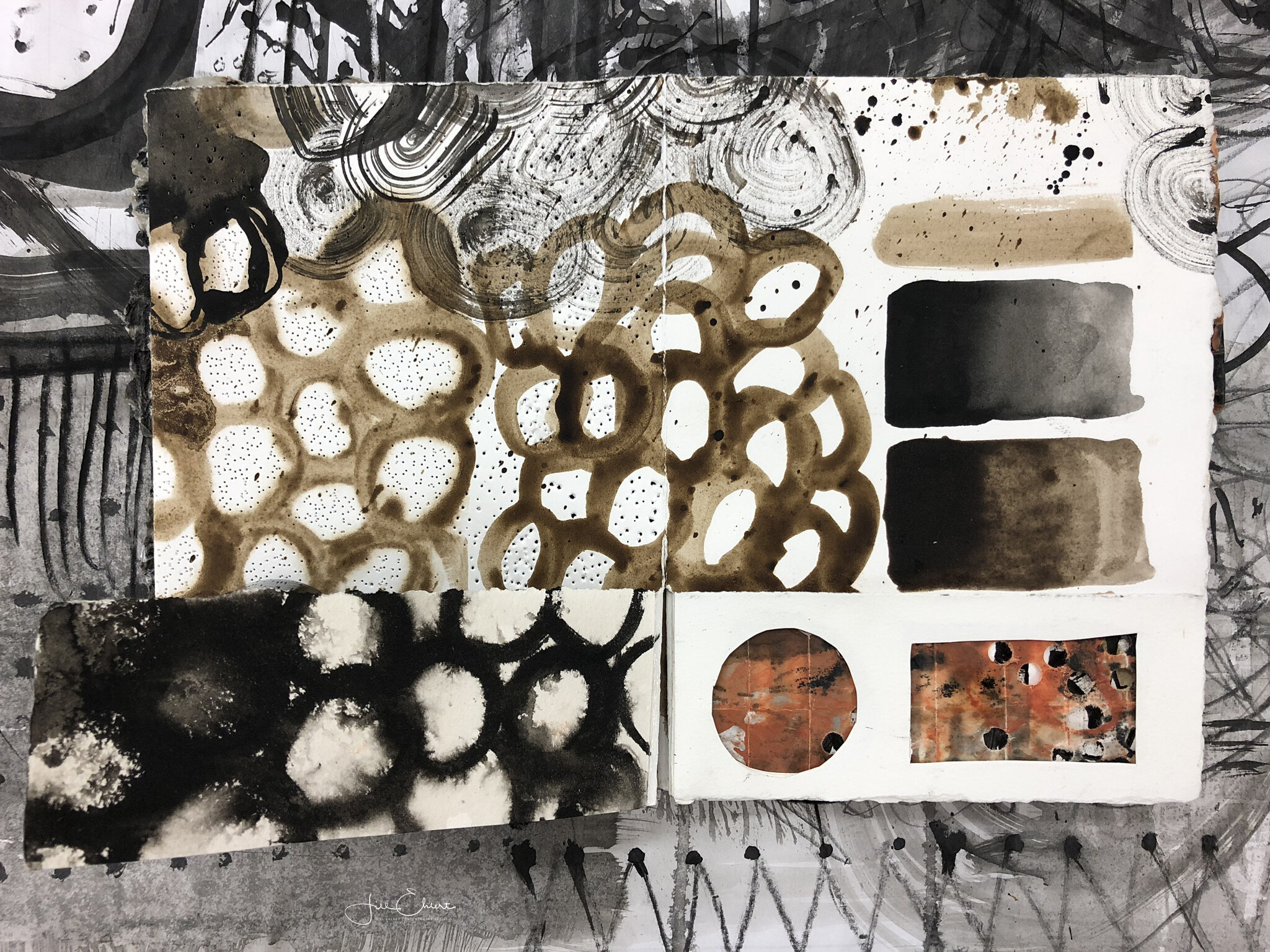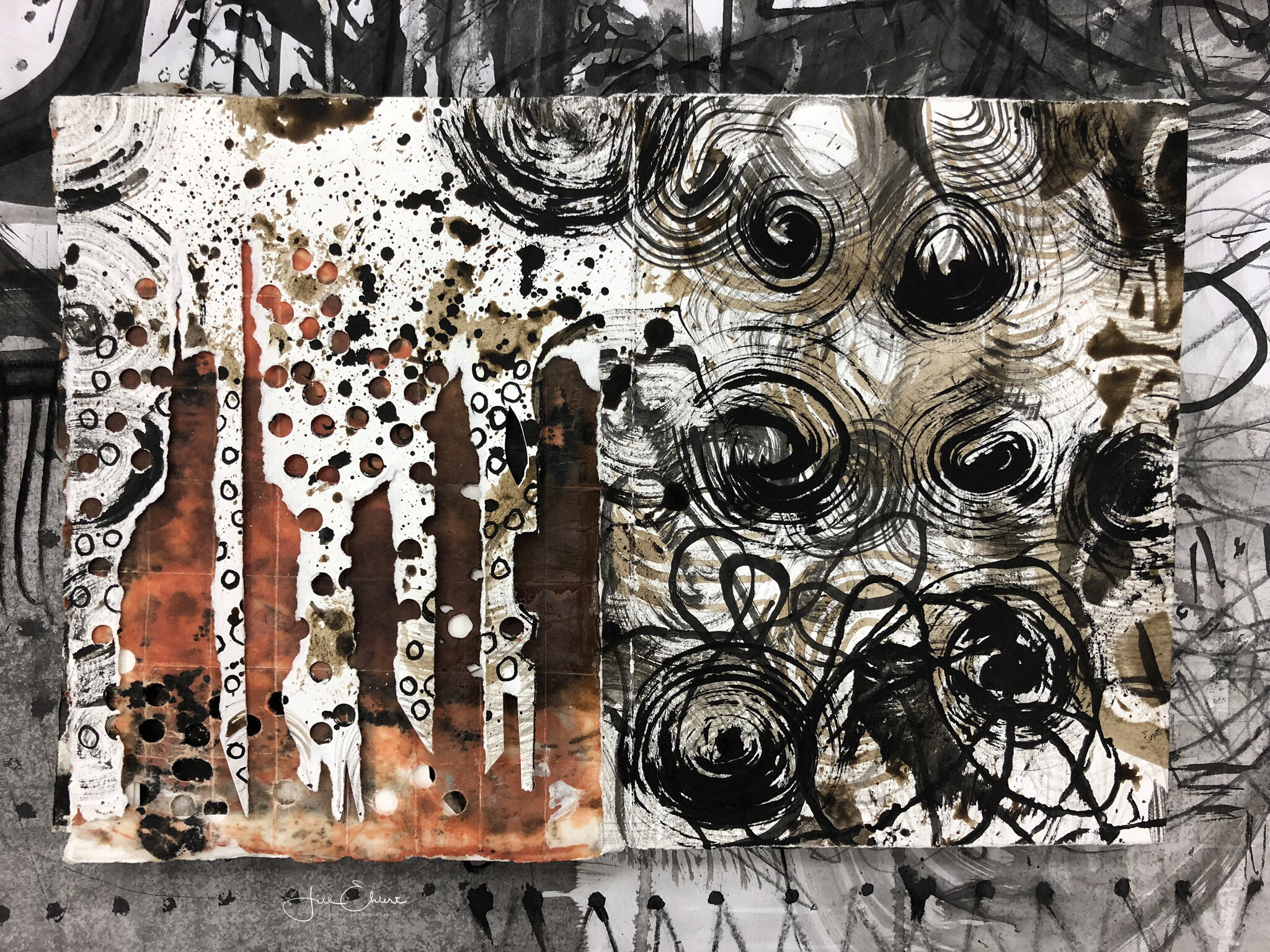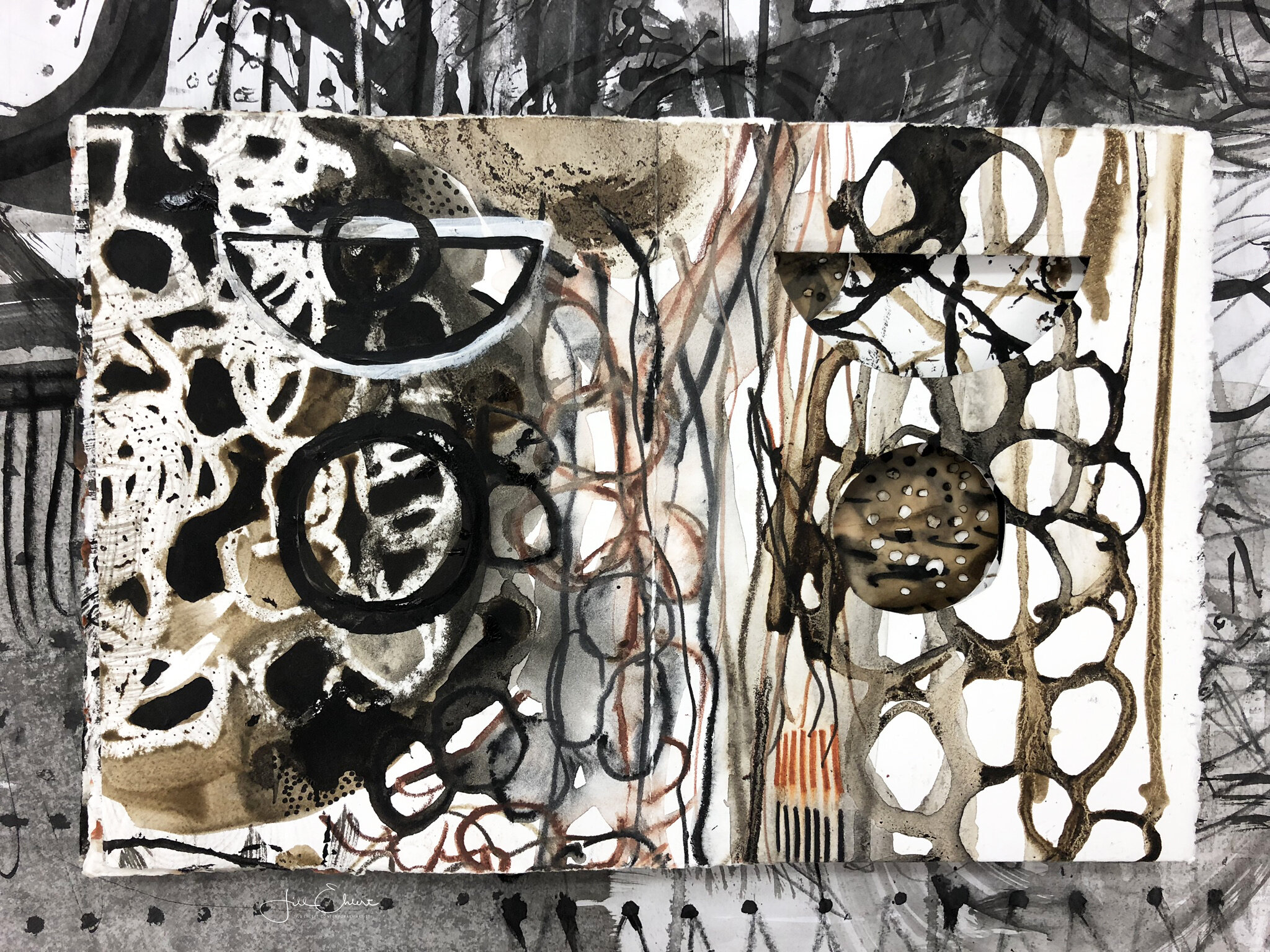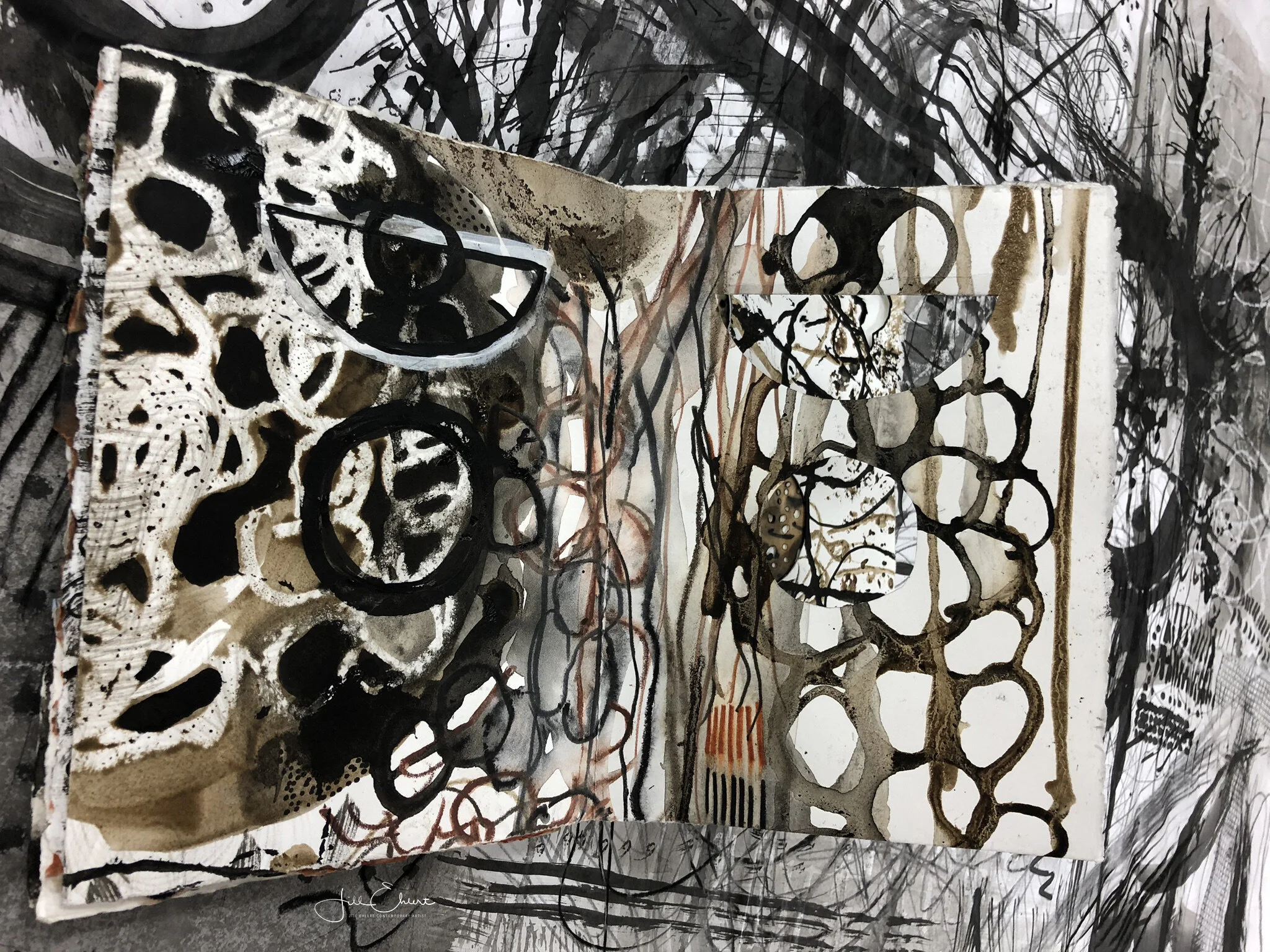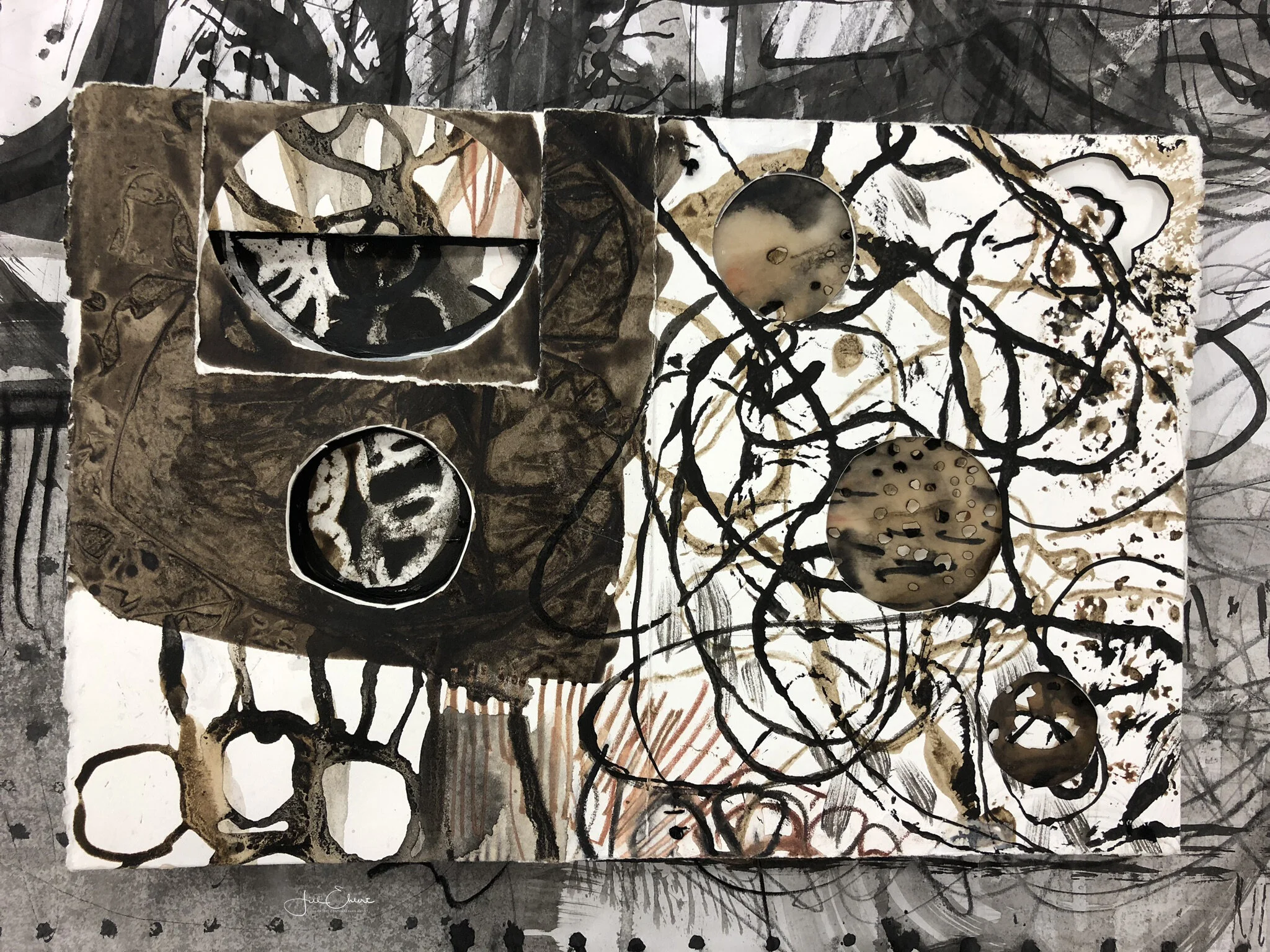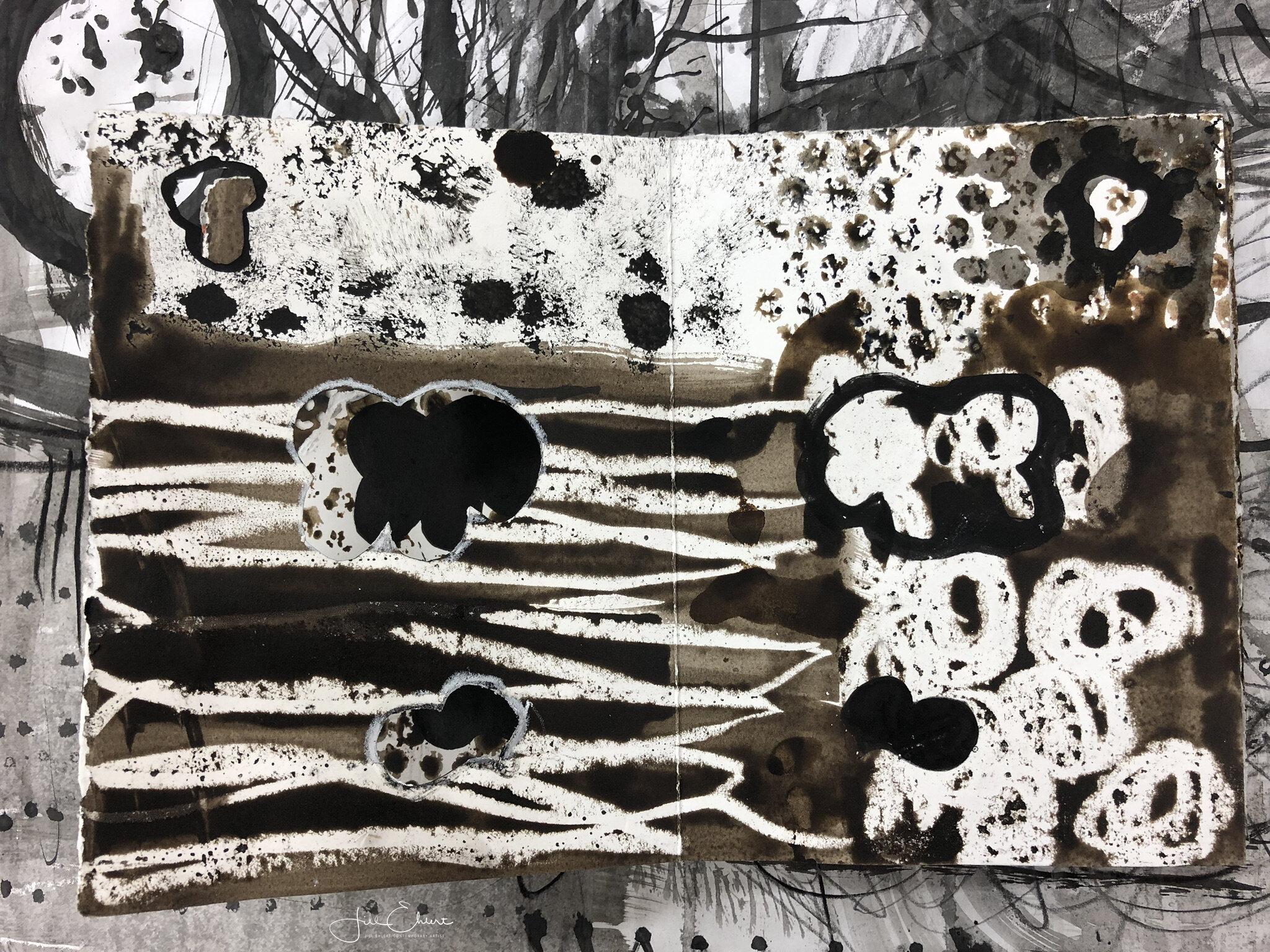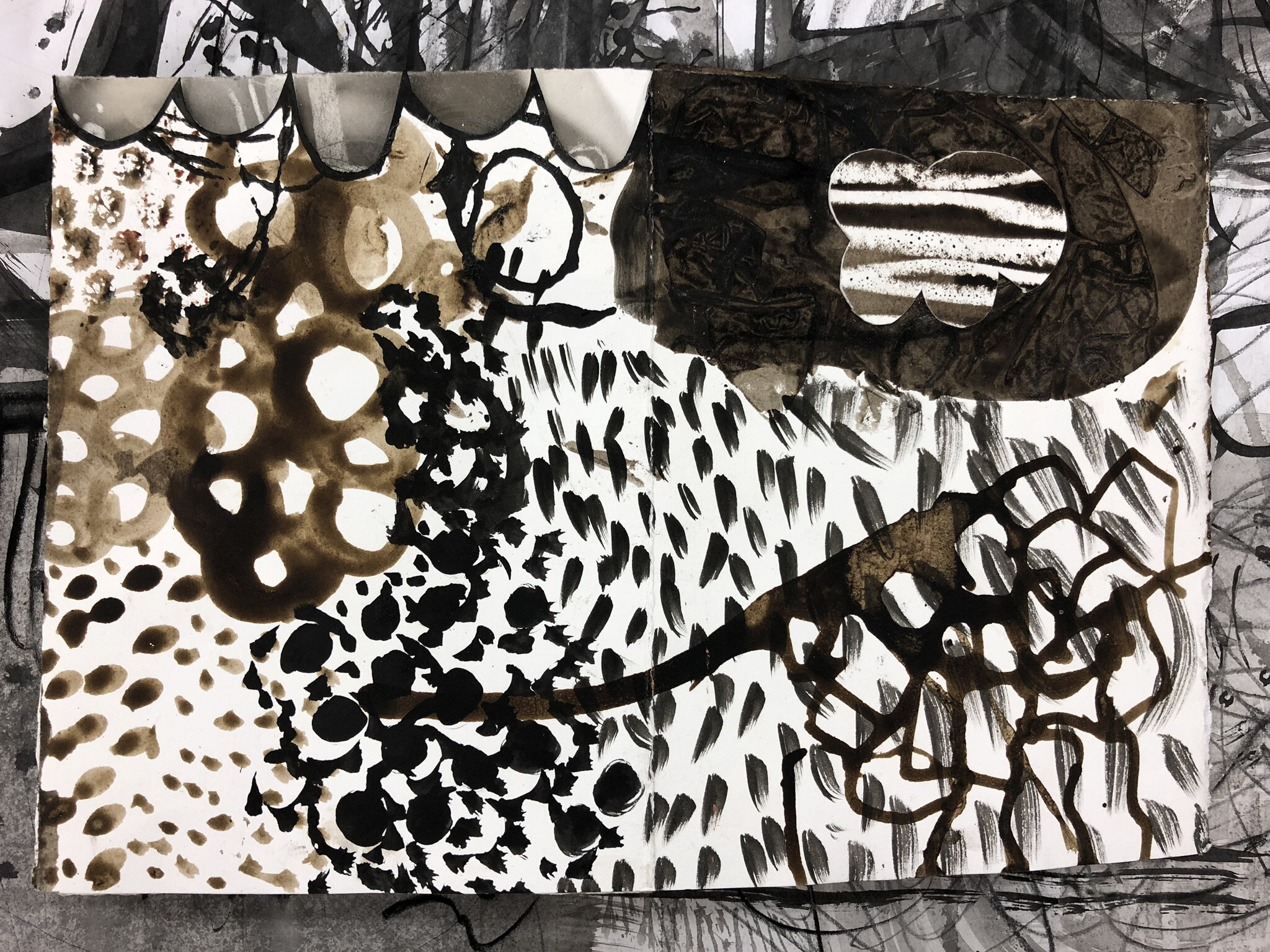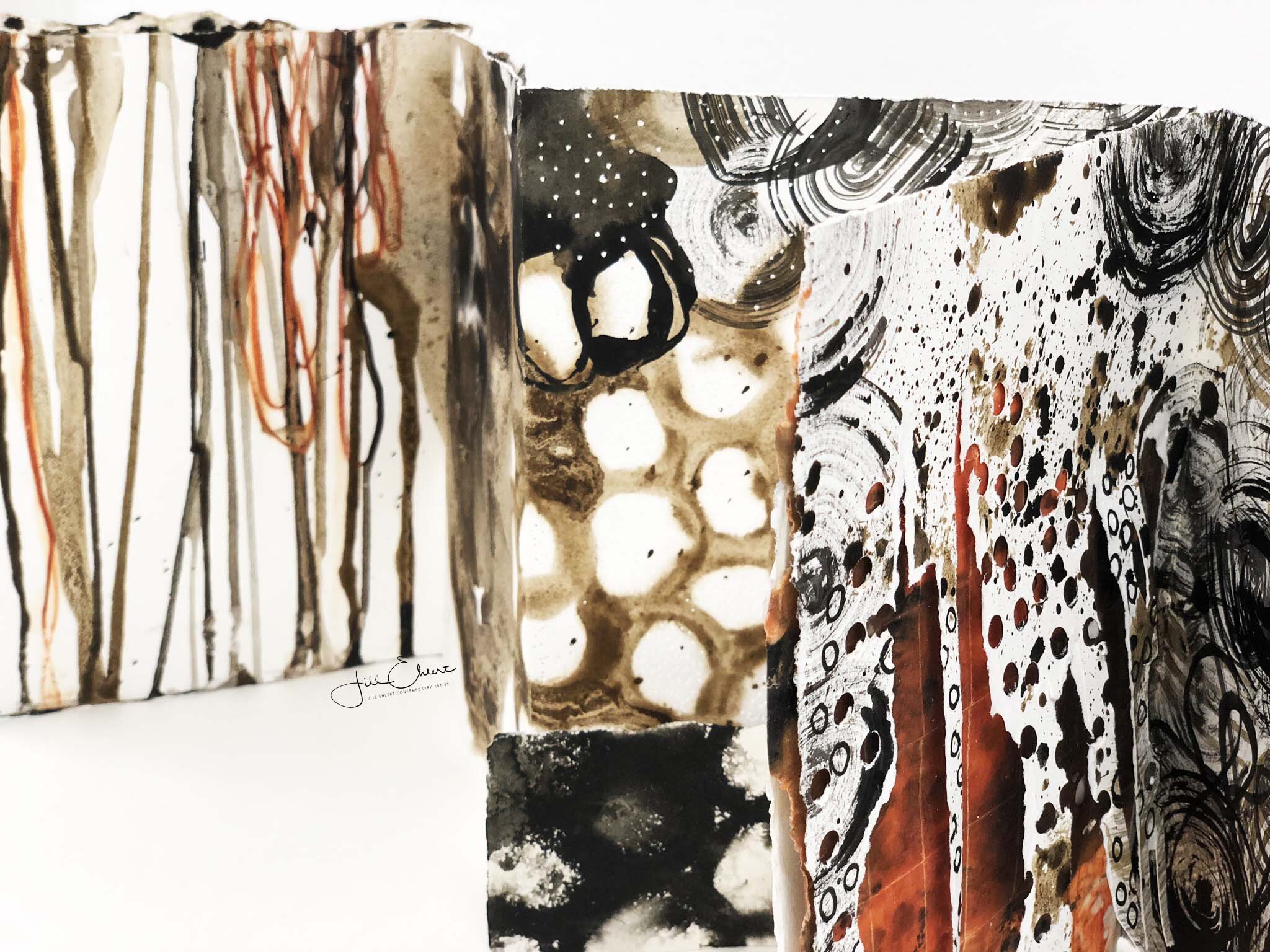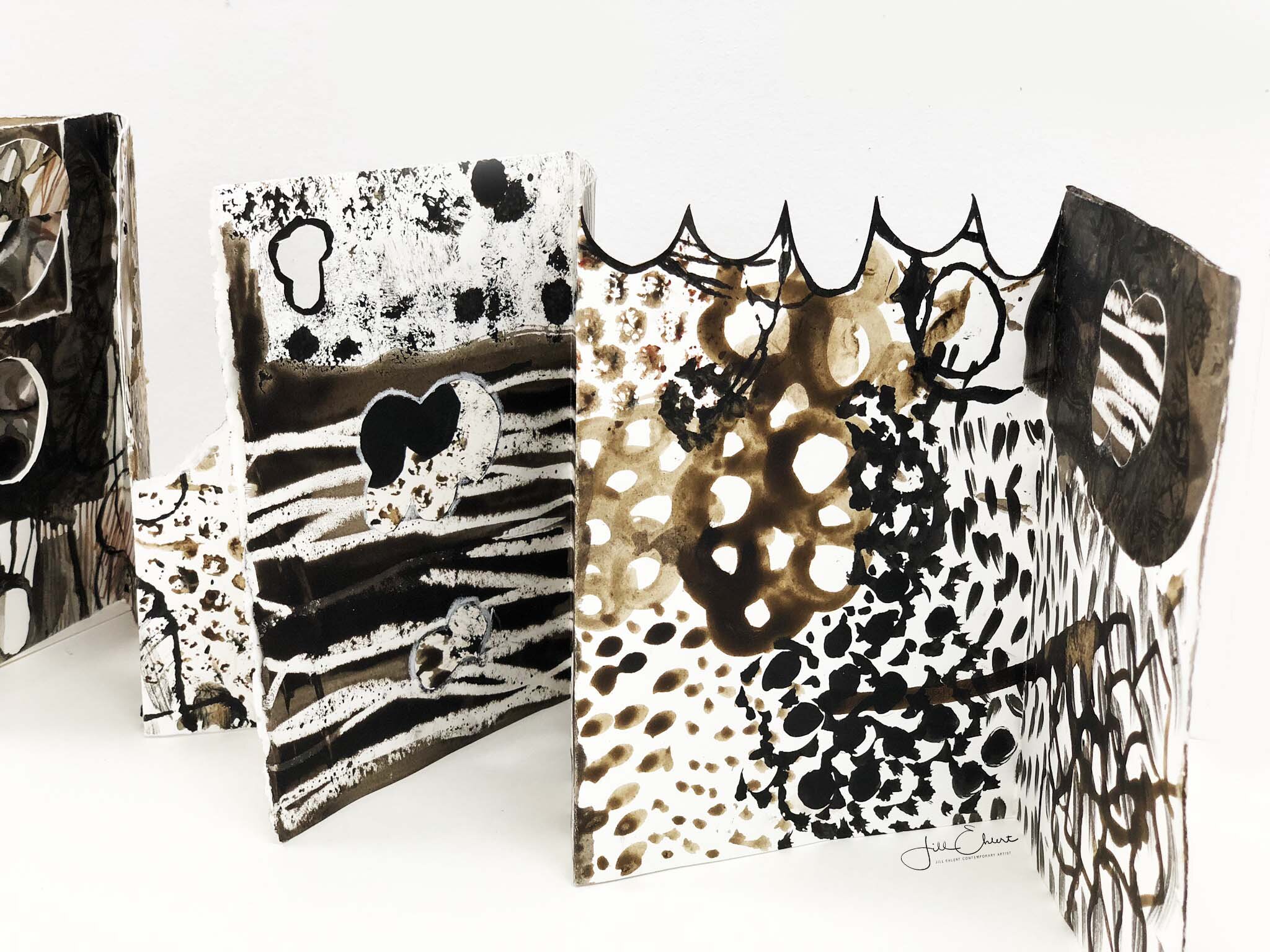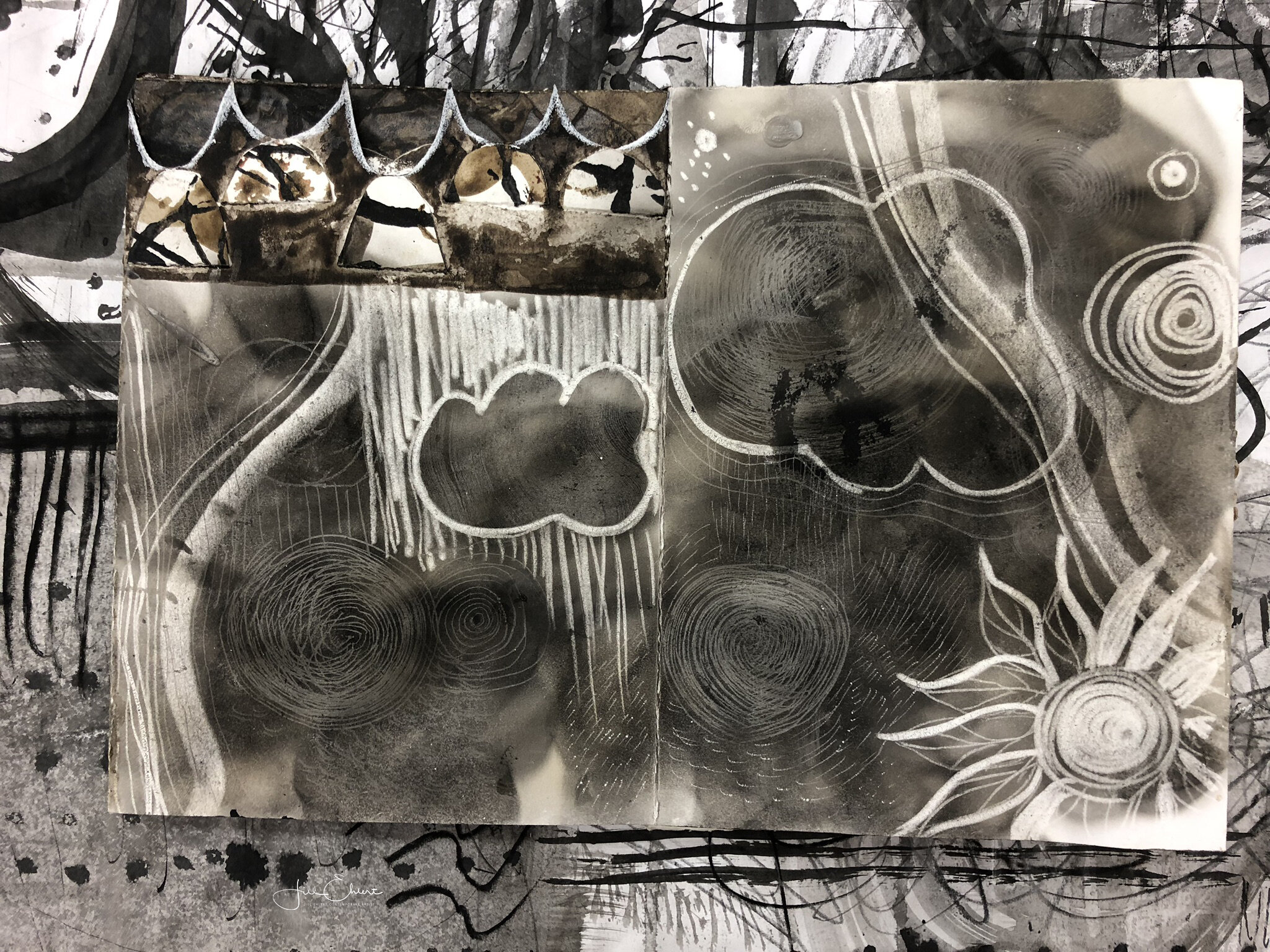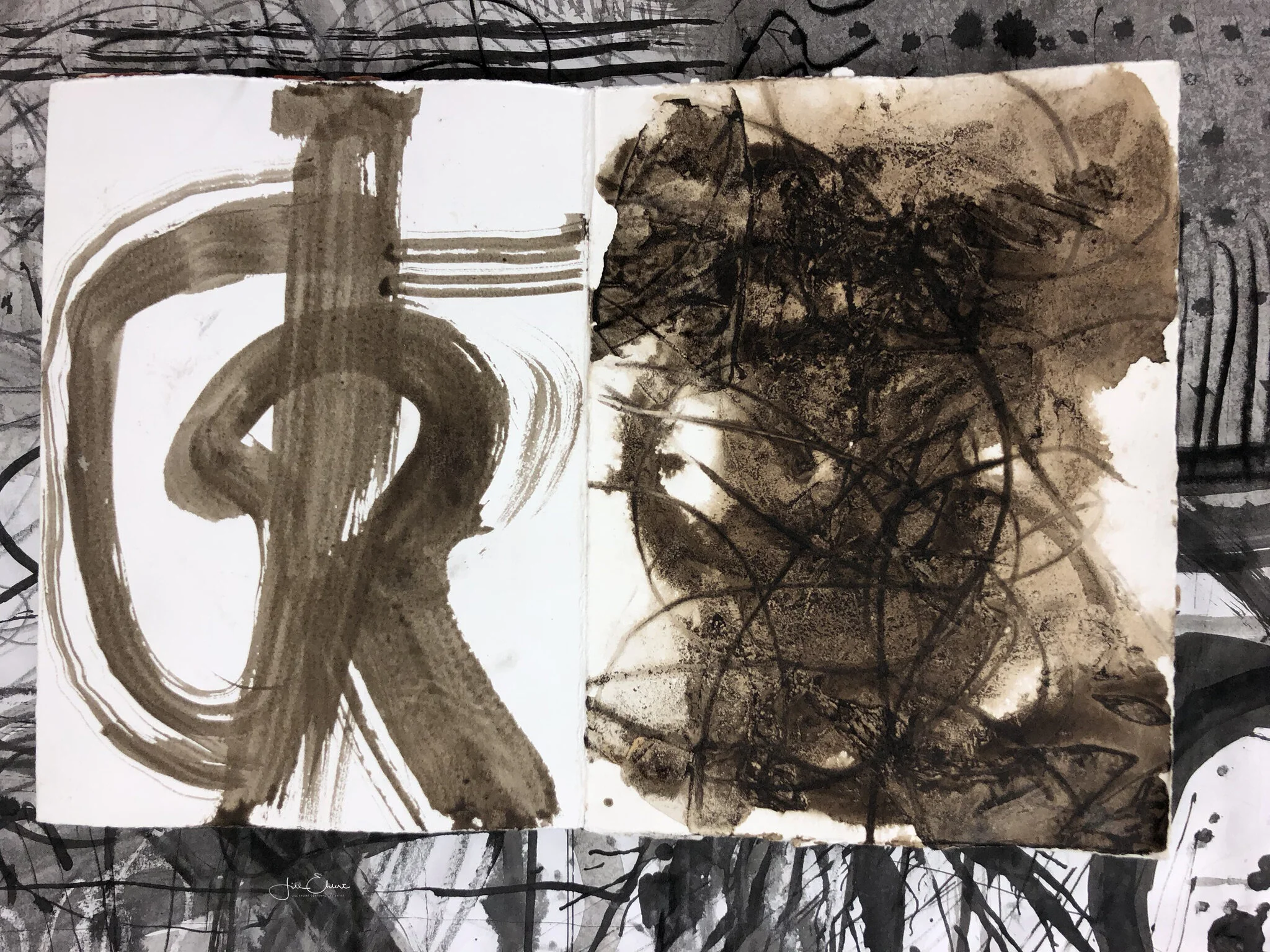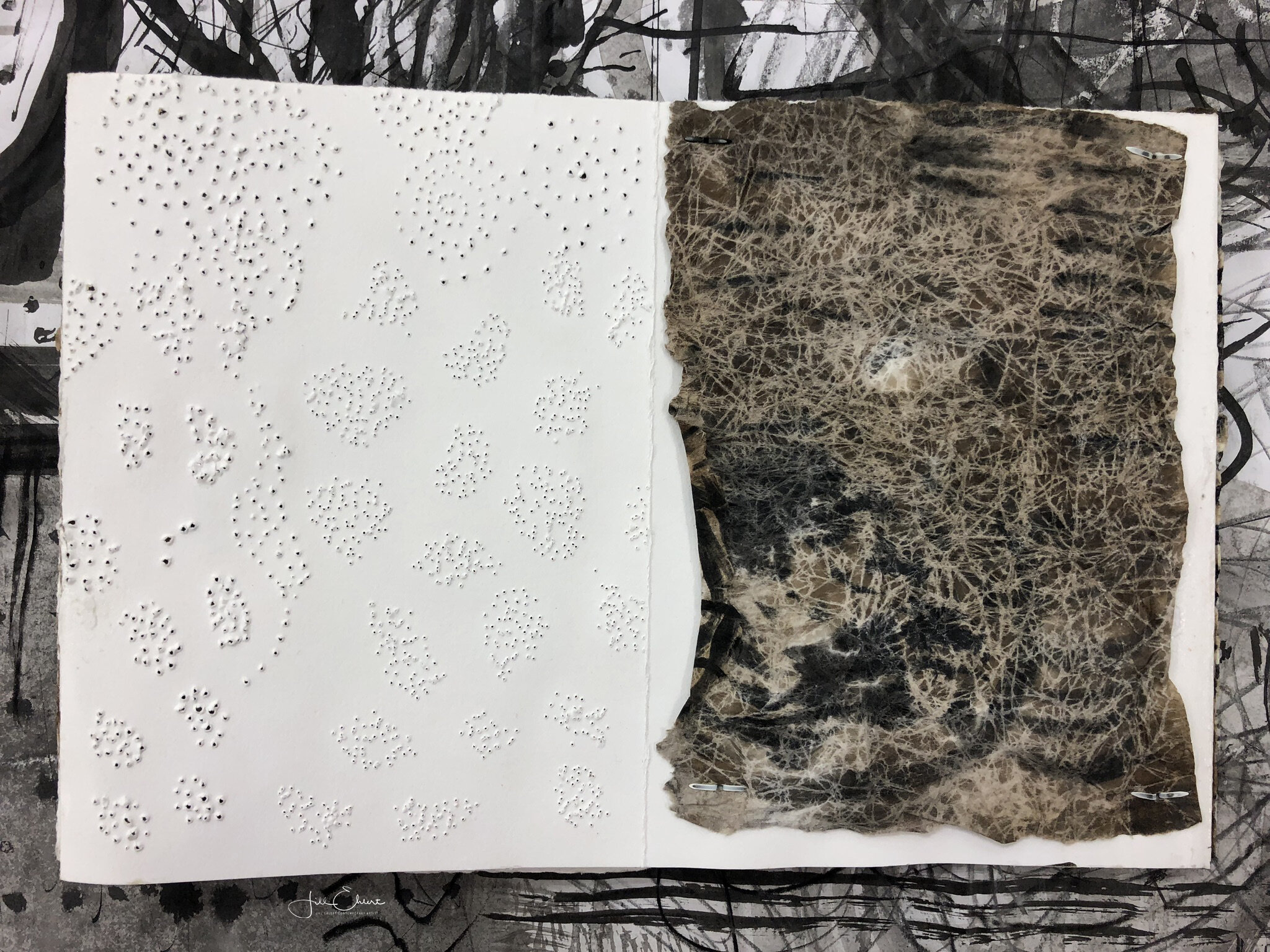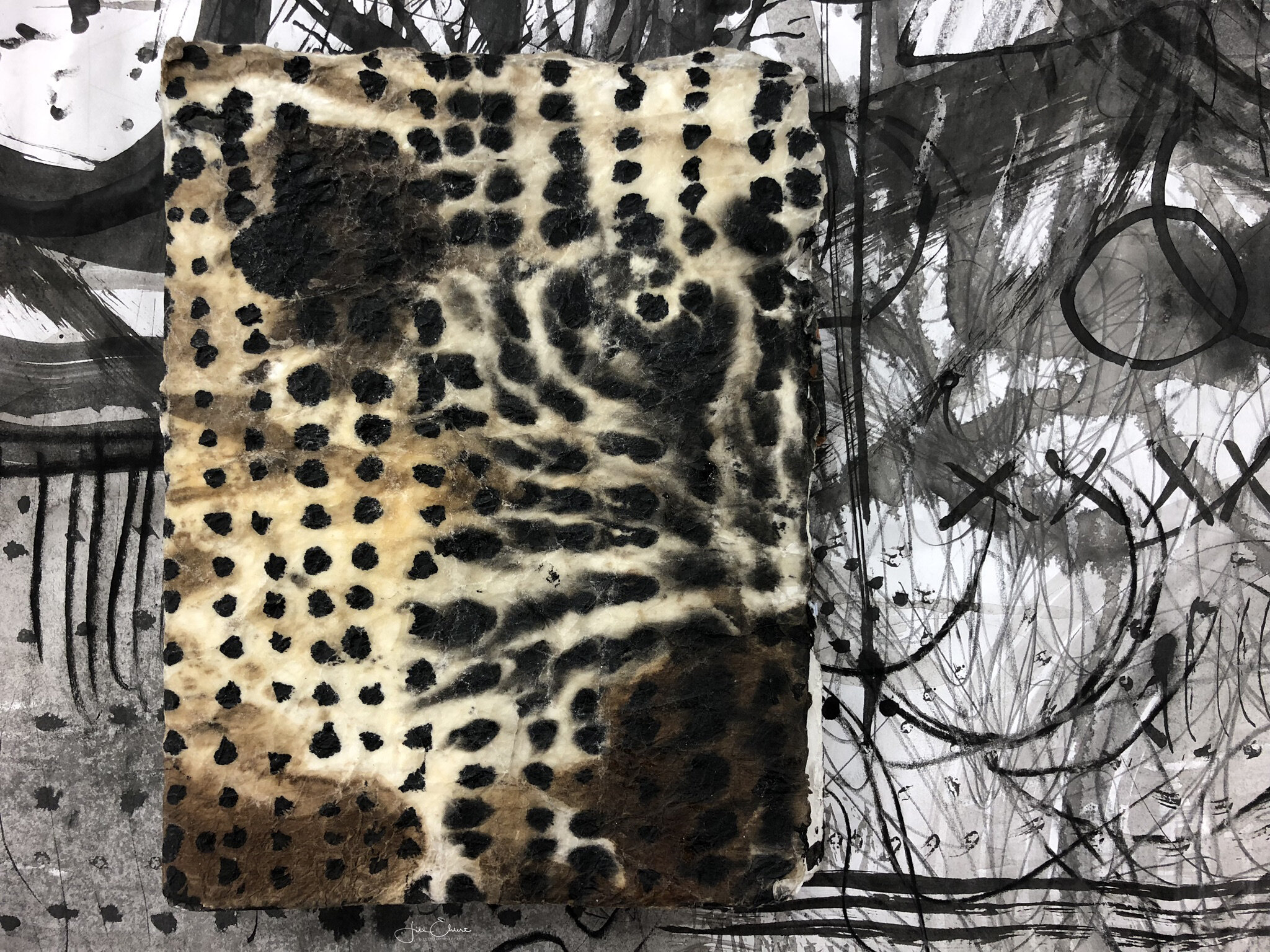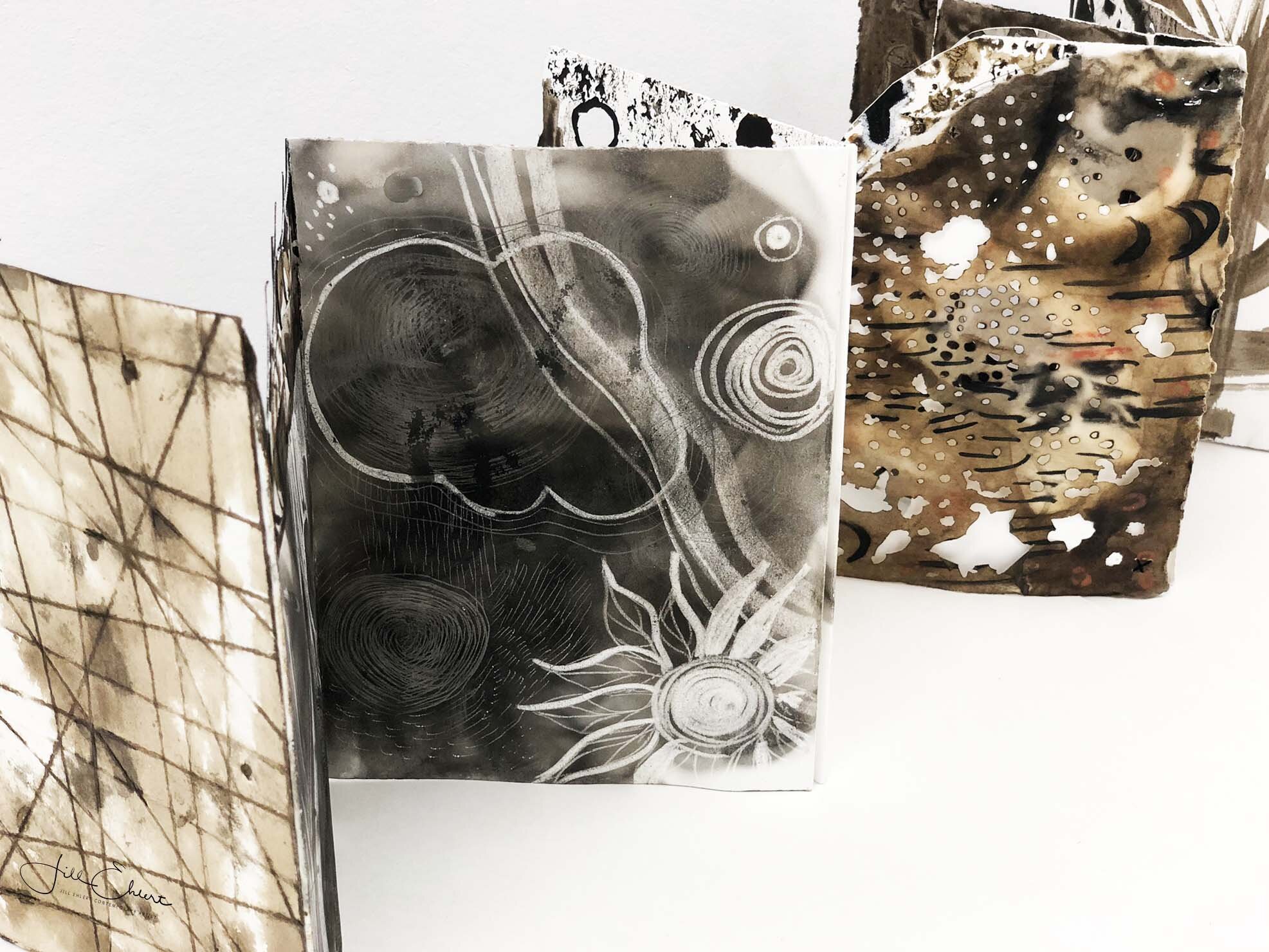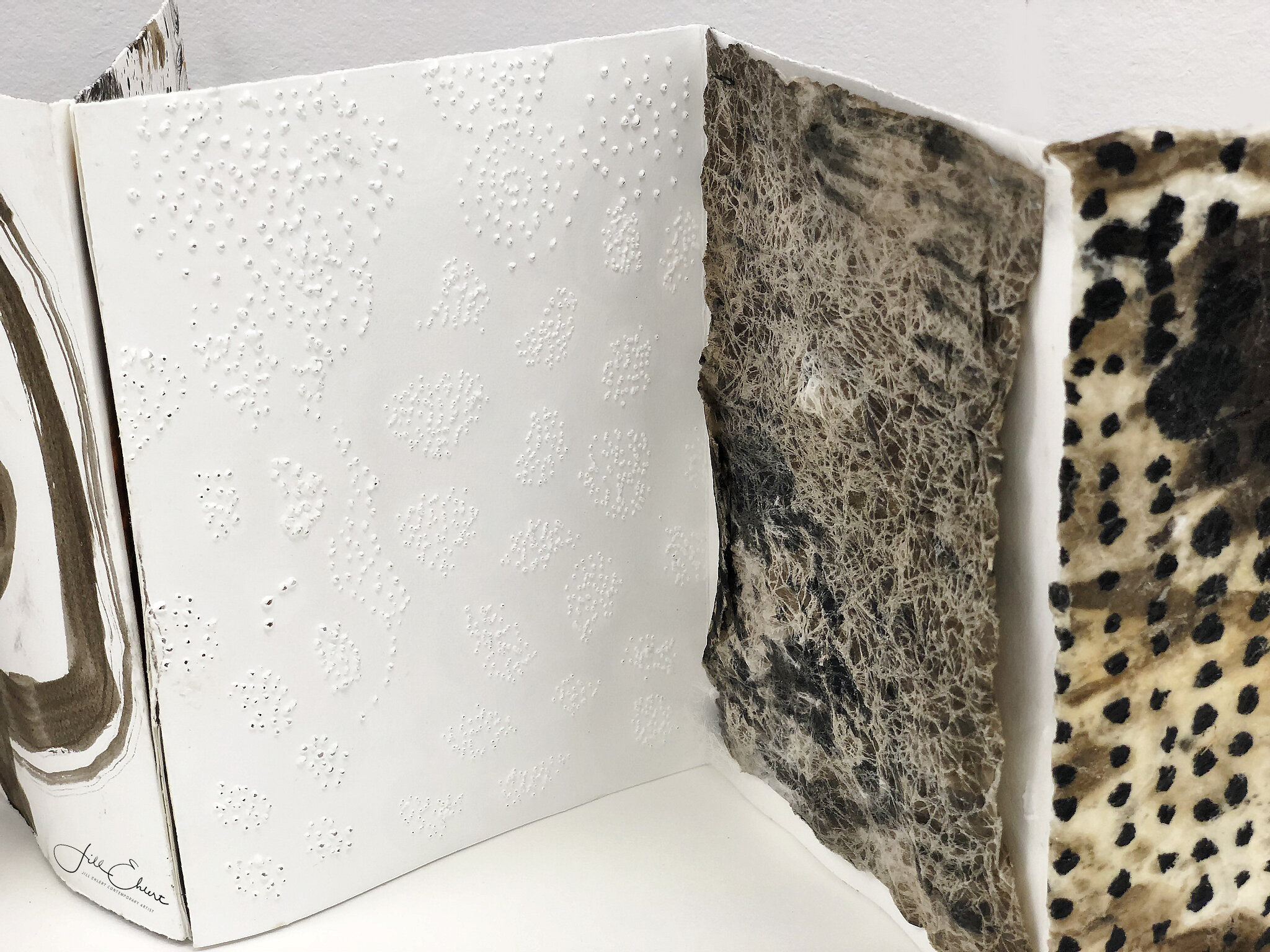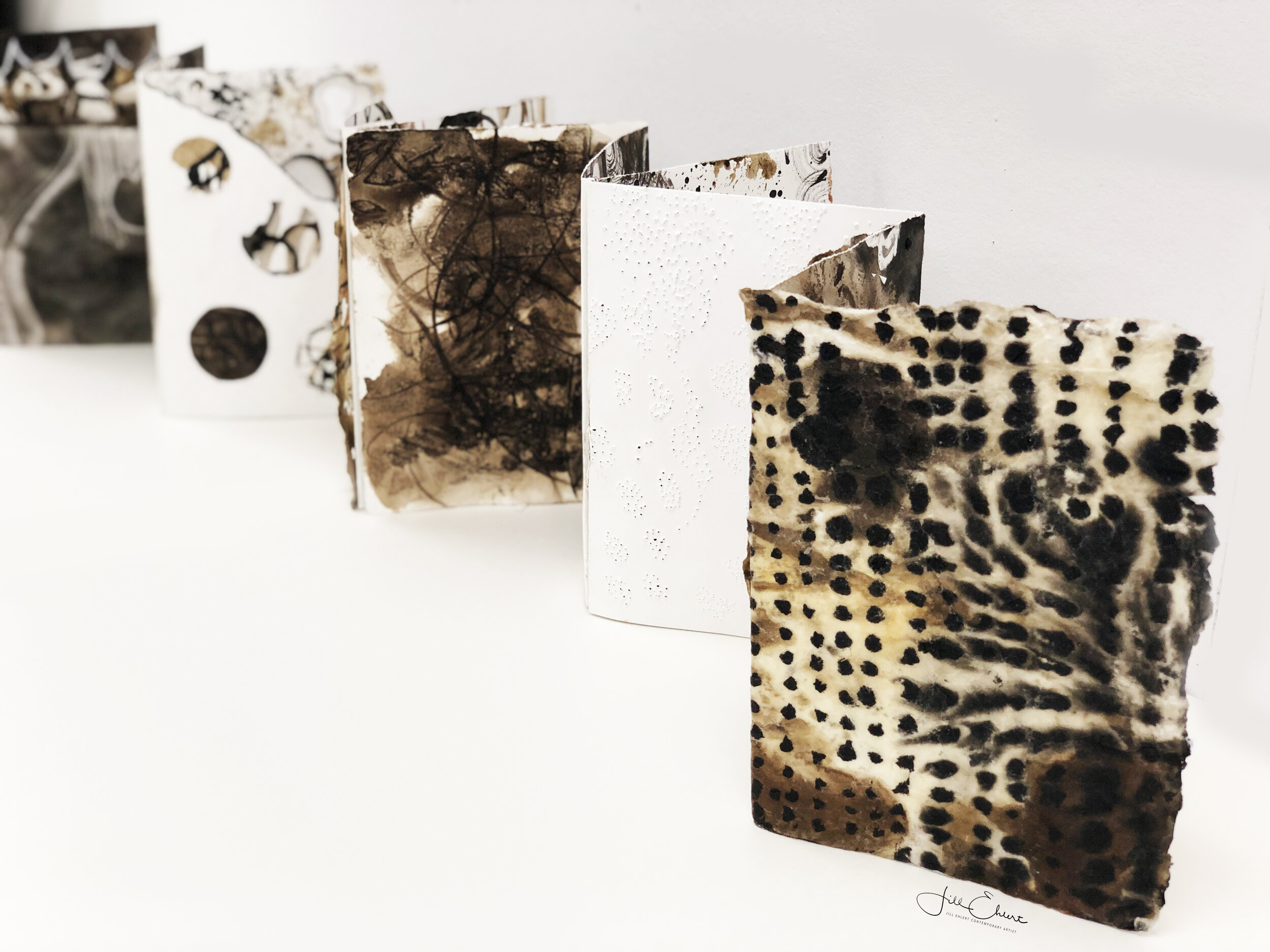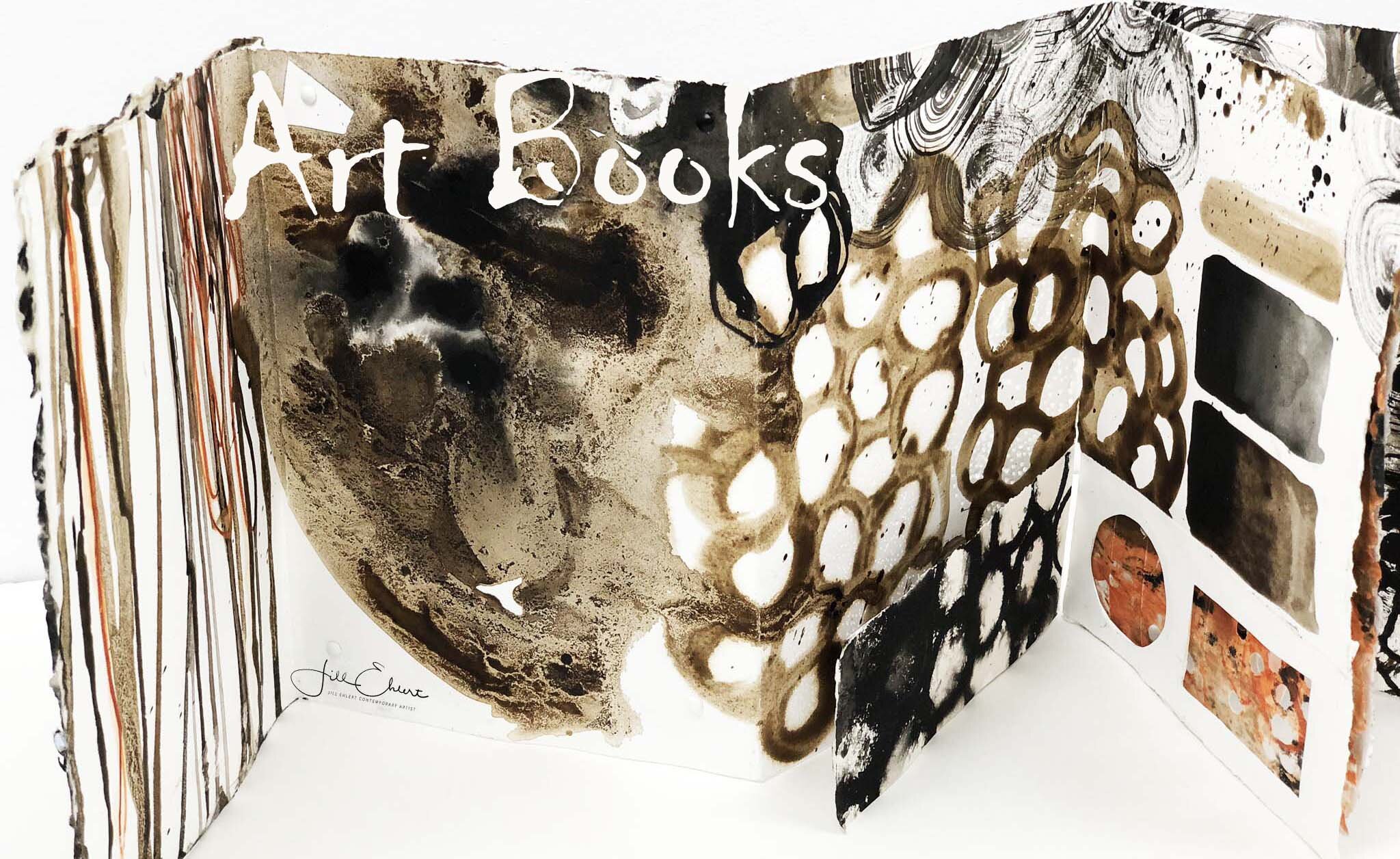
“Characters”, 11 1/8” X 45” 2018, 8 pages, one side. This collage concertina book is composed of collage materials that I created on Washi paper. I start employing a method that I call “fluid drawing”. I am mindful of slowing down mind and body, working in a contemplative way. I use small movements with hand and wrist. I work on Washi paper, first applying a tea stain; I draw slowly into the wet area with a dip pen using walnut and India ink. The inks spread and create unpredictable lines, I respond to what is before me. I create other collage papers with wax resists, rubbings, perforating holes,folding and creasing paper… melting beeswax on some for a transparent effect…the variations are endless. The end result yields beautiful marks and characteristics that are a history of the actions my body used.
“Allowing”, 2015, 11.25” X 50”, Concertina, 20 pages, two sides.
An experimental book of marks exploring and recording unconventional methods of mark making.
This book was part of the Rebound exhibition at Gallery 1580, Victoria, BC. October 3-17 2015. Rebound was a show of experimental new works by 18 west coast artists exploring the book as a contemporary art form.
CREATING MARKS THROUGH ACTIONS
“Rockweed”, 2015 7.5” X 11”,
Spiral bound, 30 pages.
This book uses a simple shape of seaweed as the subject to explore mark-making using unconventional tools such as an awl, smoke, fire, needle, thread, hammer and nail.
A range of movements and actions through puncturing, smoking, burning, rubbing, cutting, sewing, melting beeswax, piercing, cutting, folding, creasing, kneading, staining, and erasing.
The concertina book below, was produced for the 2019 workshop “Mark Making through Actions”. This side of the concertina book, has 16 pages, exploring mark-making and creating backgrounds with an array of tools and materials. The marks were created using a natural earthy palette, applying tea, India ink and my two home-made inks, Walnut and Acorn cap. Several of the pages have cut-outs, overlays, shapes cut or torn along top or side edges.
The reverse side of the above book has10 pages. This is an exploration, into alternative ways of mark-making, as well as creating surfaces, using unconventional methods such as: burning, smoking, piercing, scoring, rubbing, folding, and cutting. A range of unique tools were used, including an awl, fire, smoke, pipette, wax and string…

